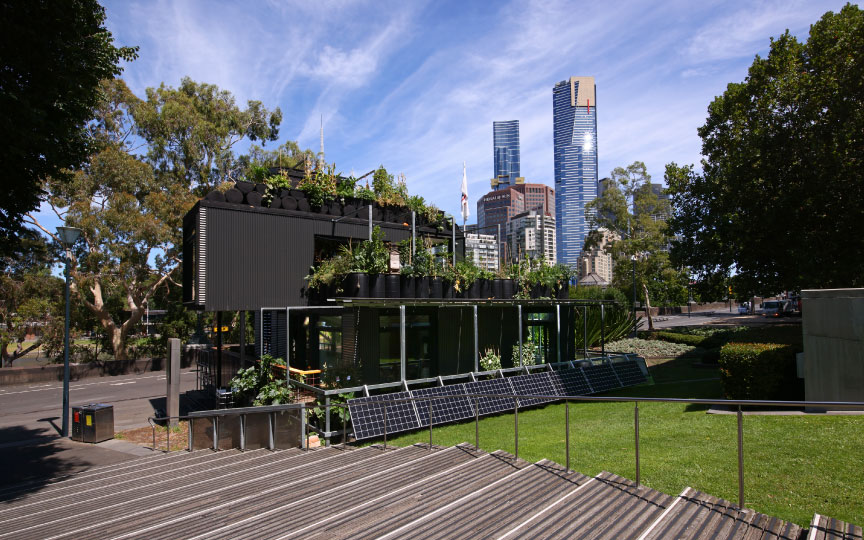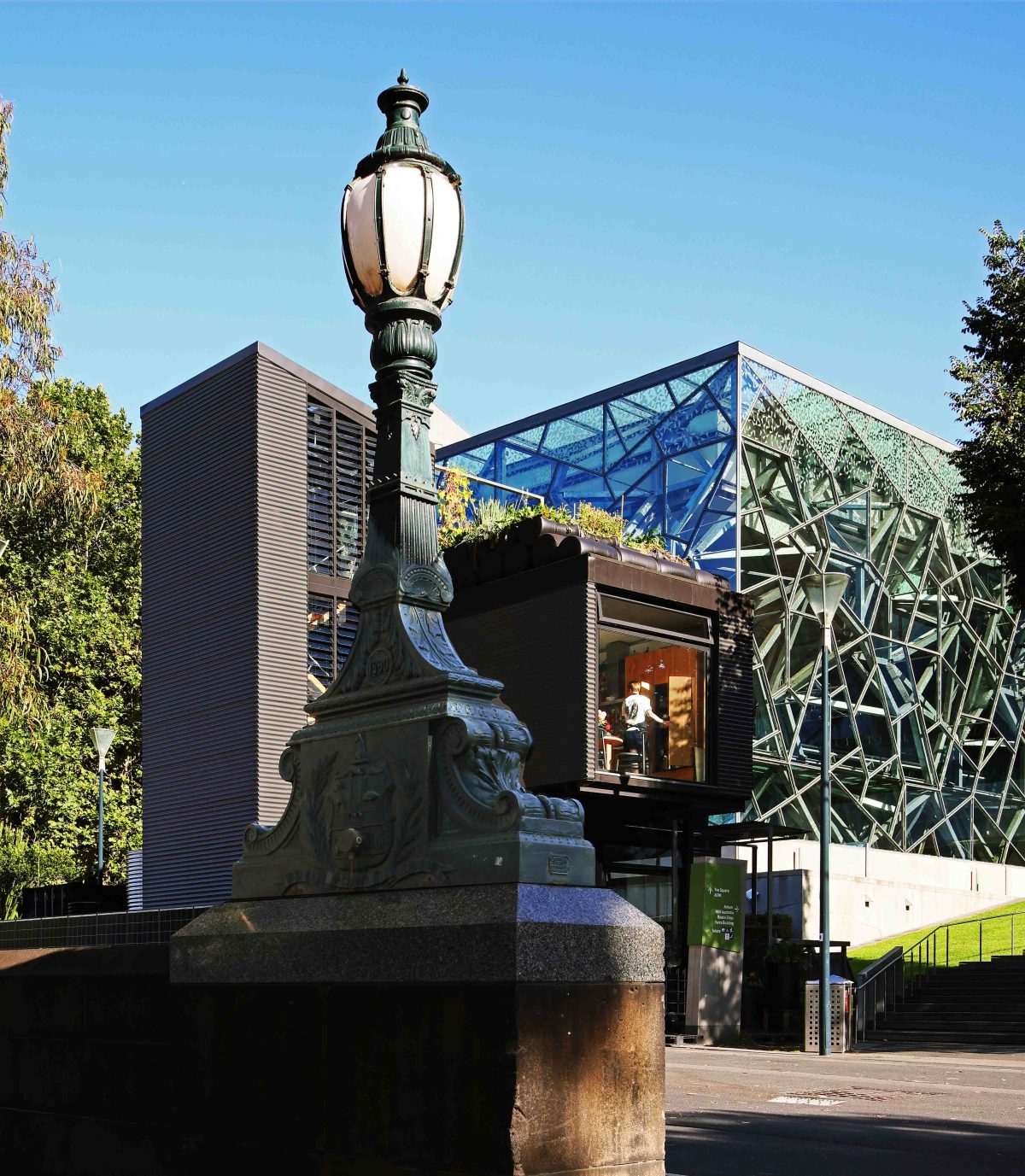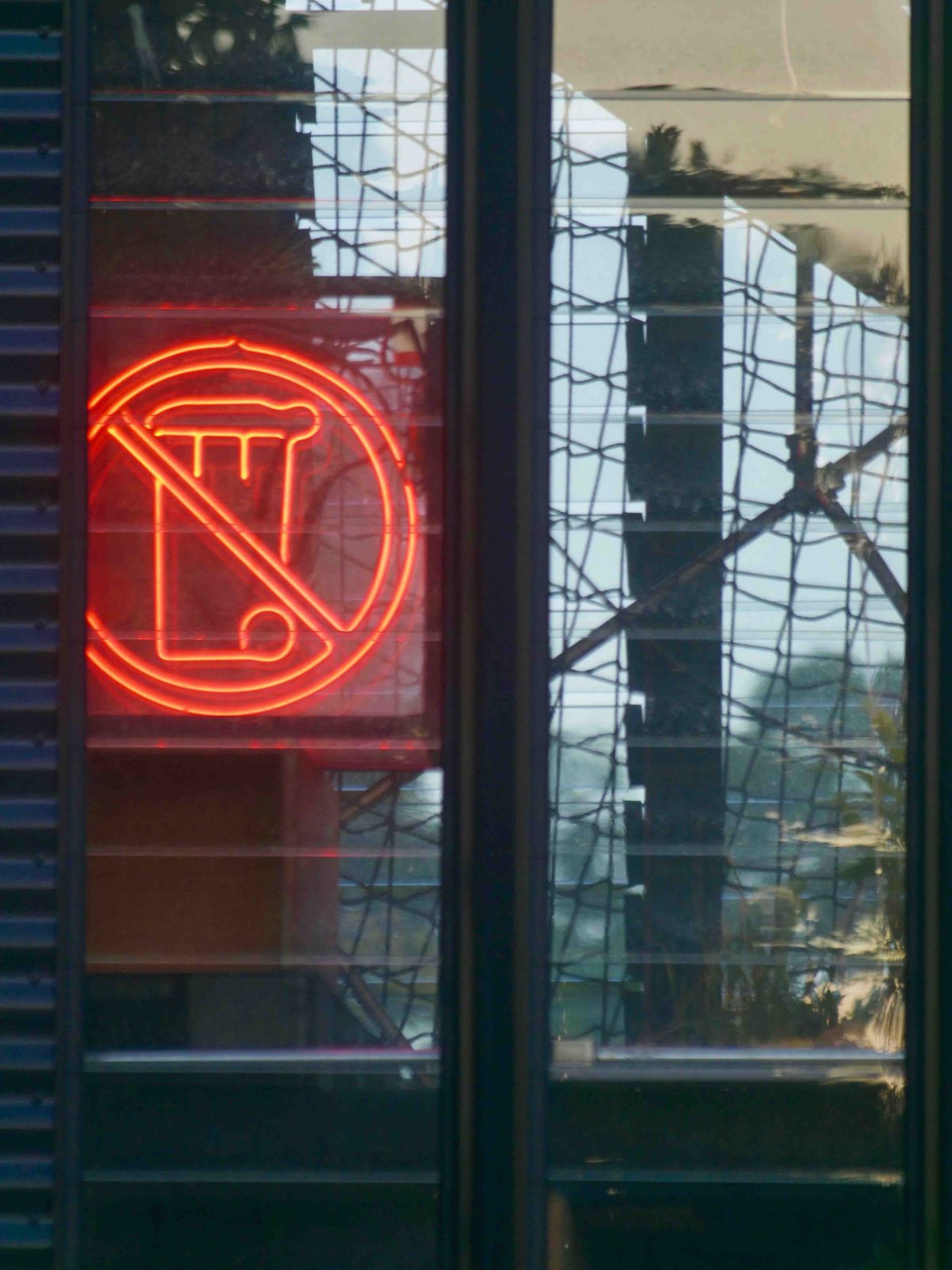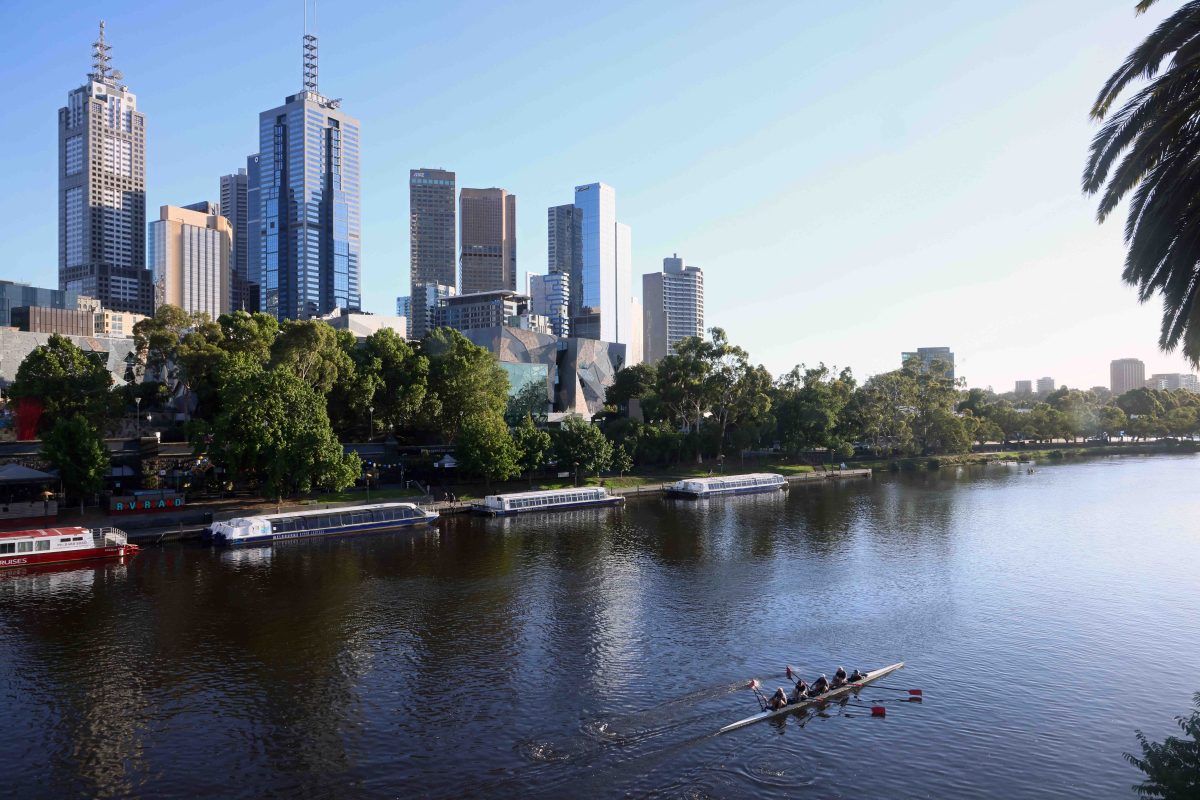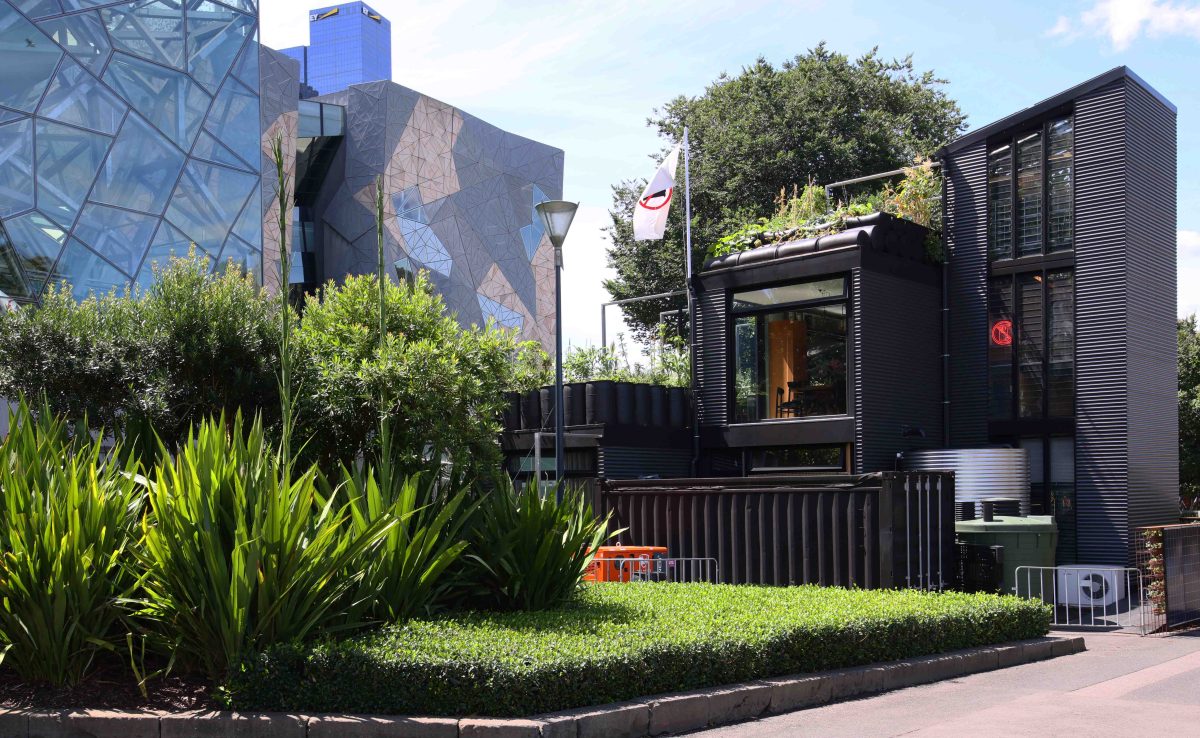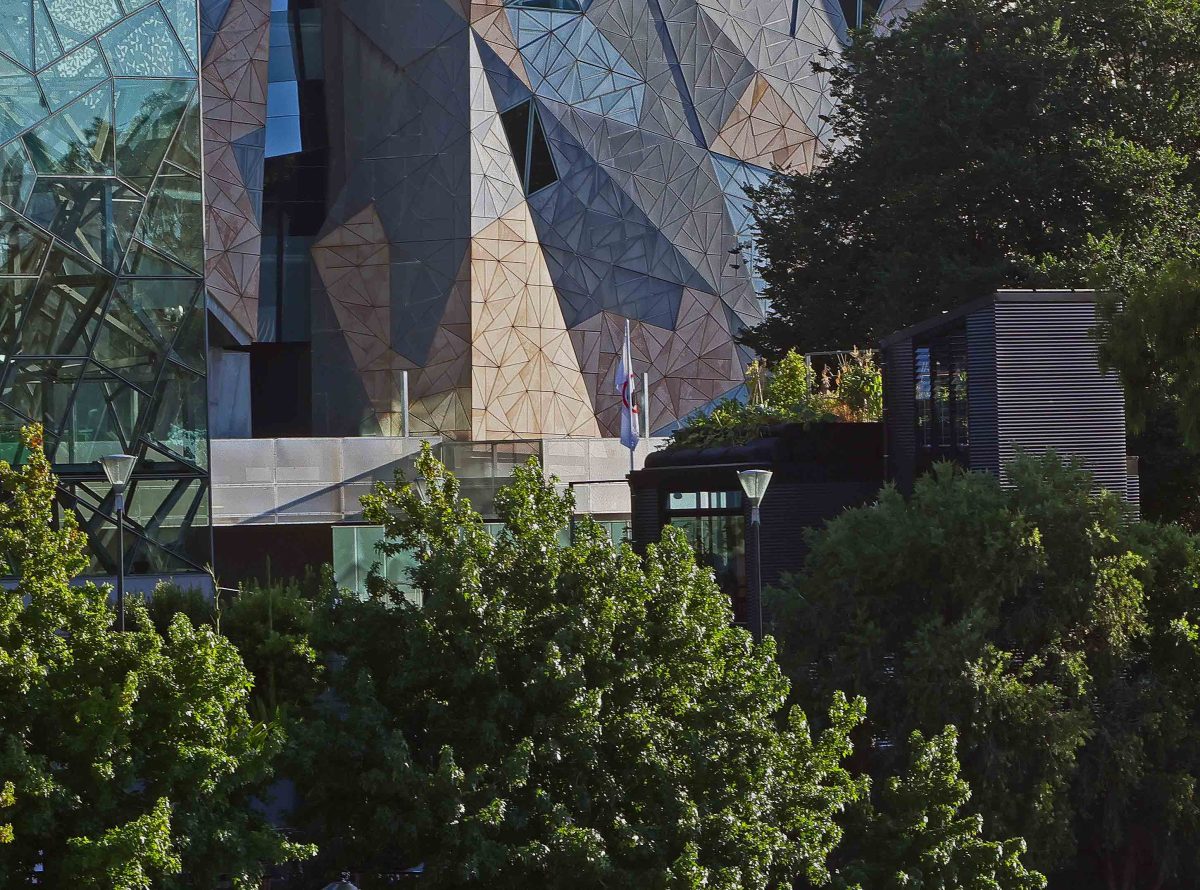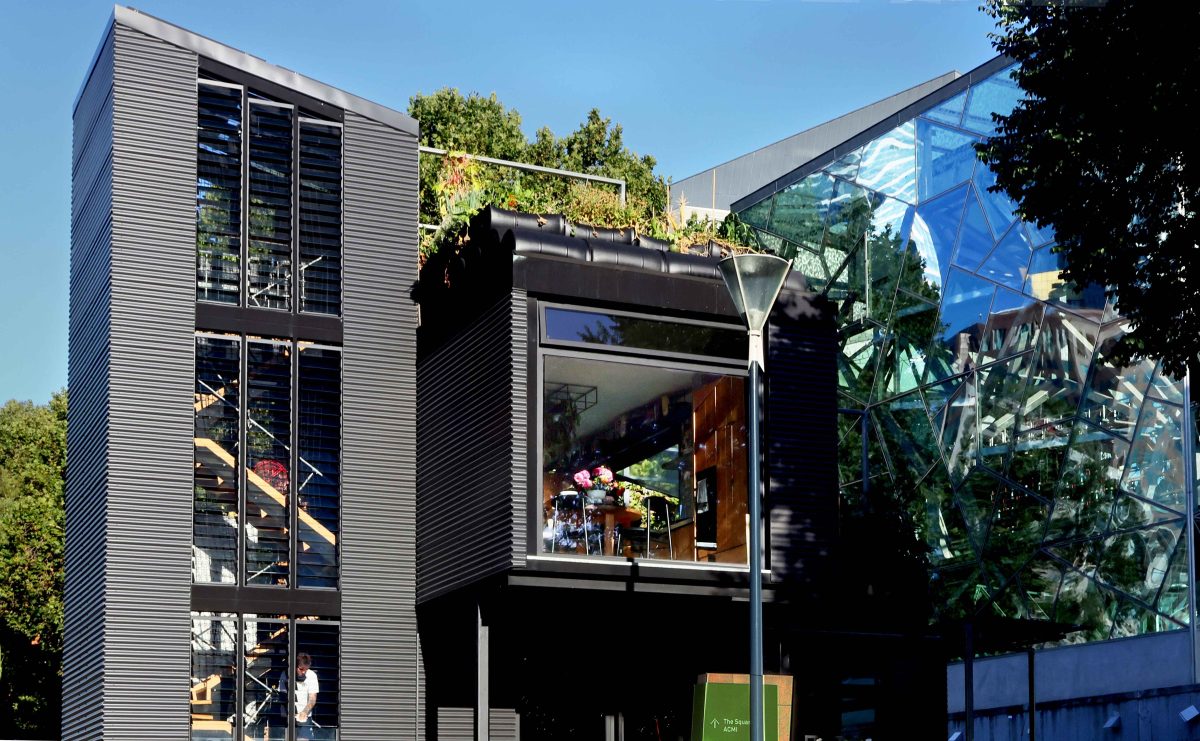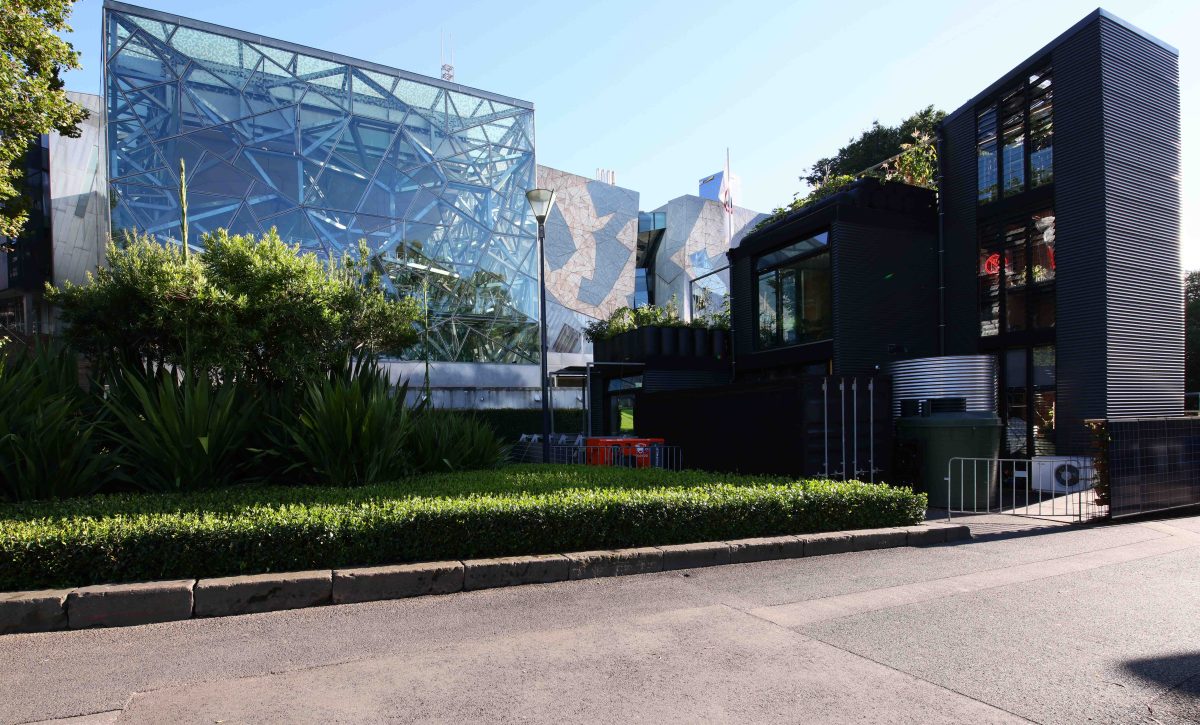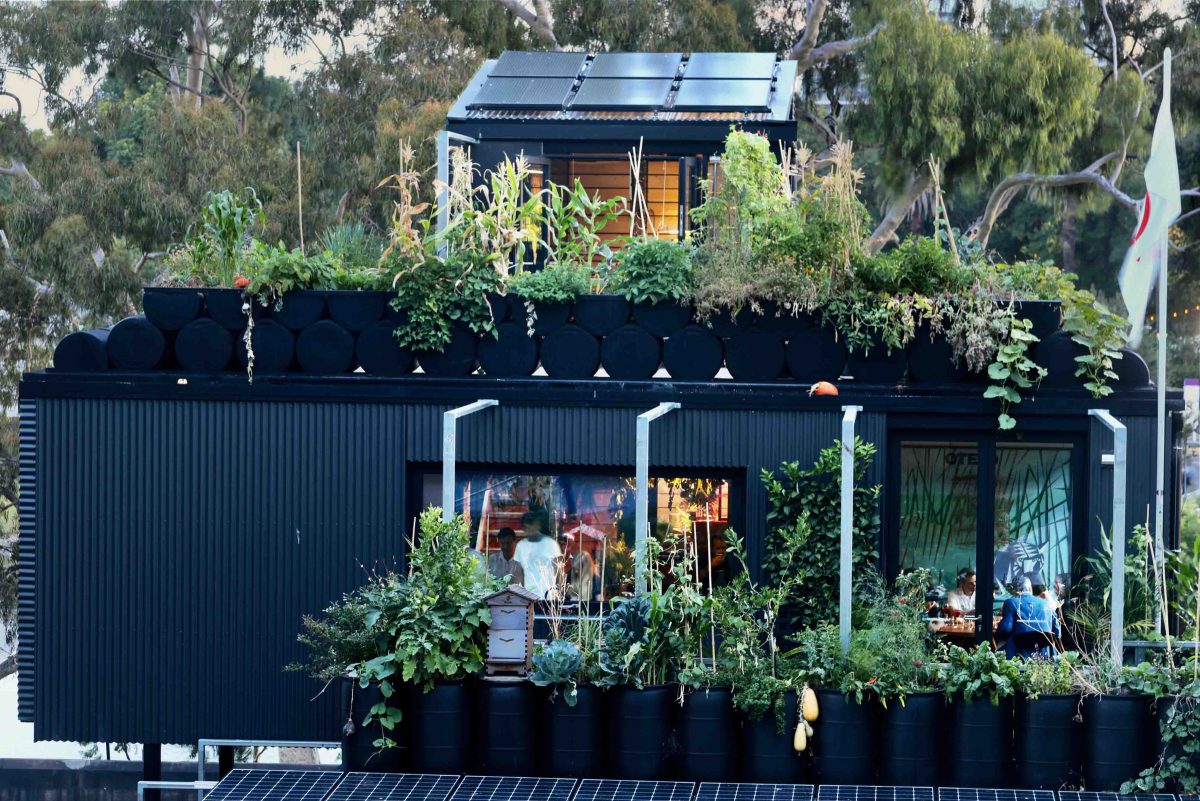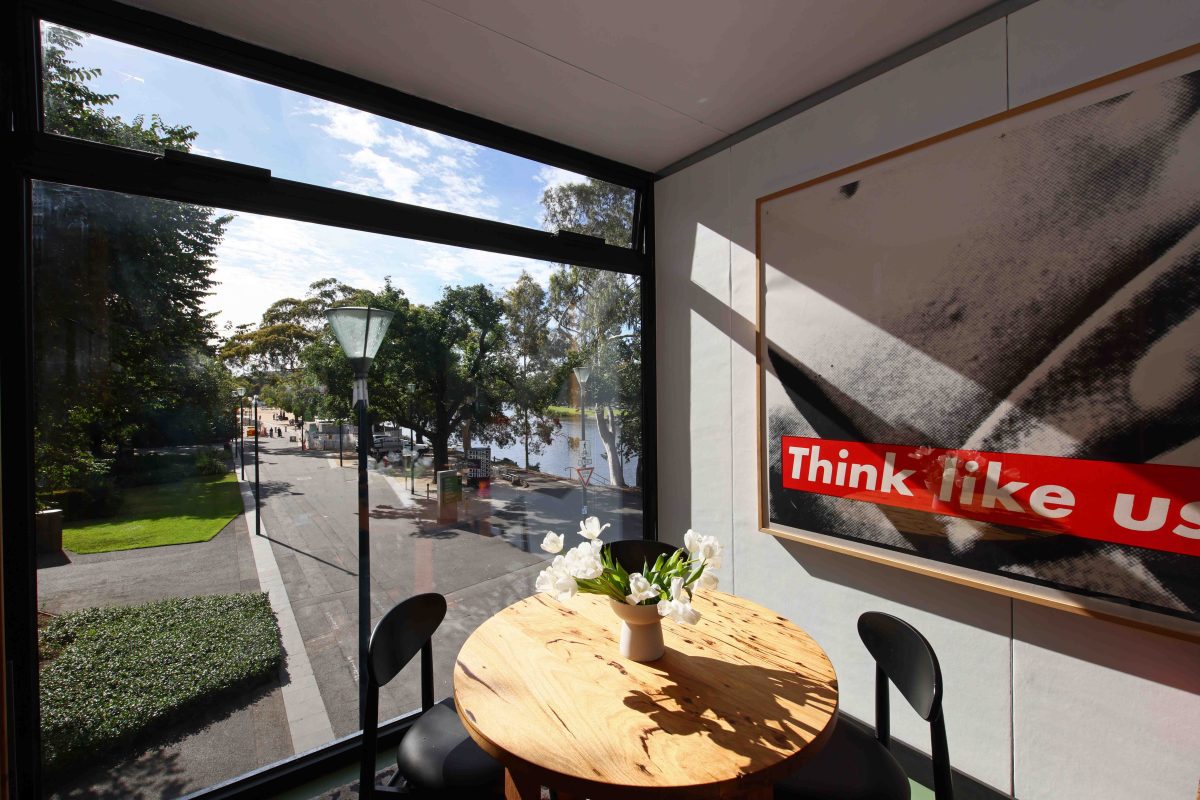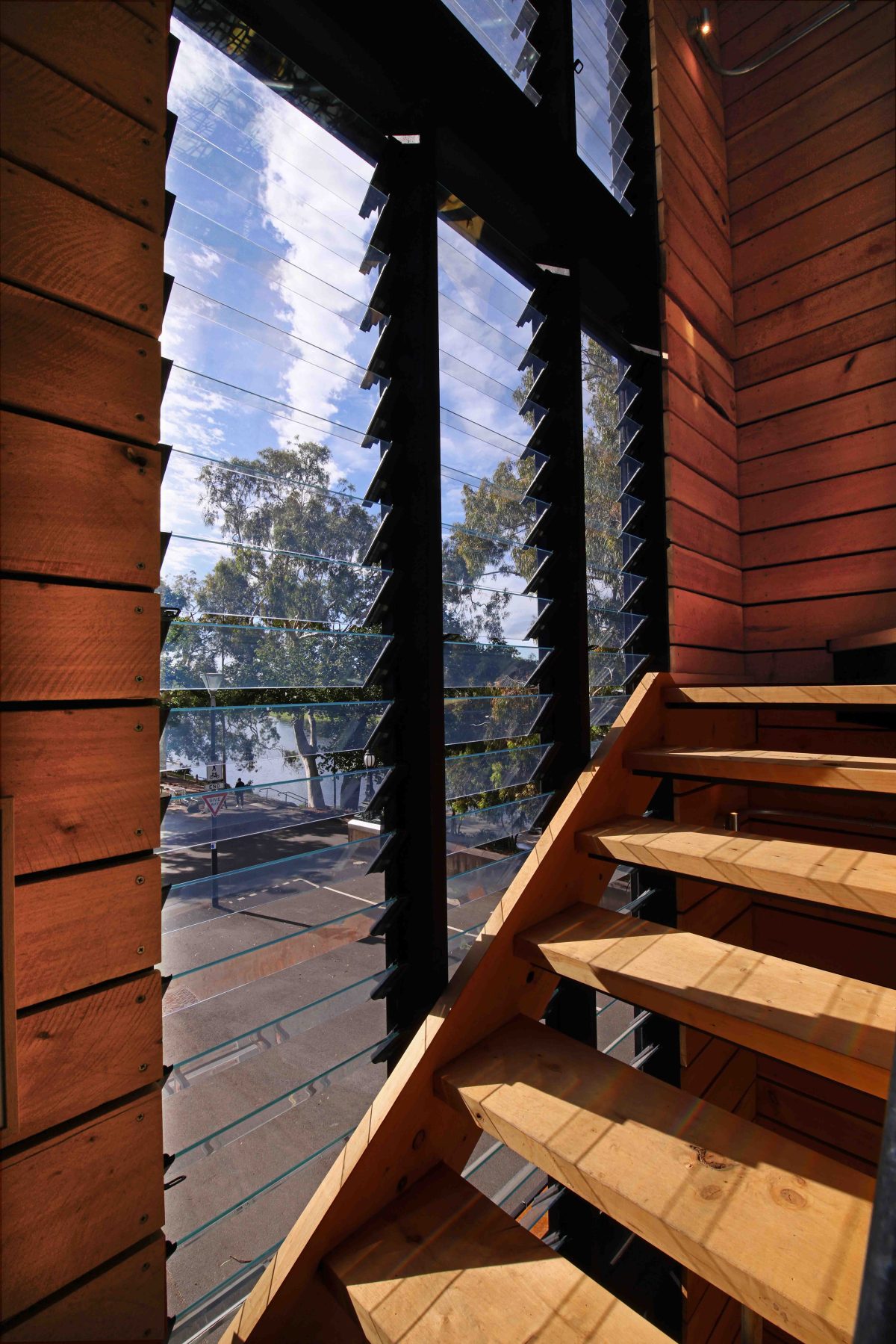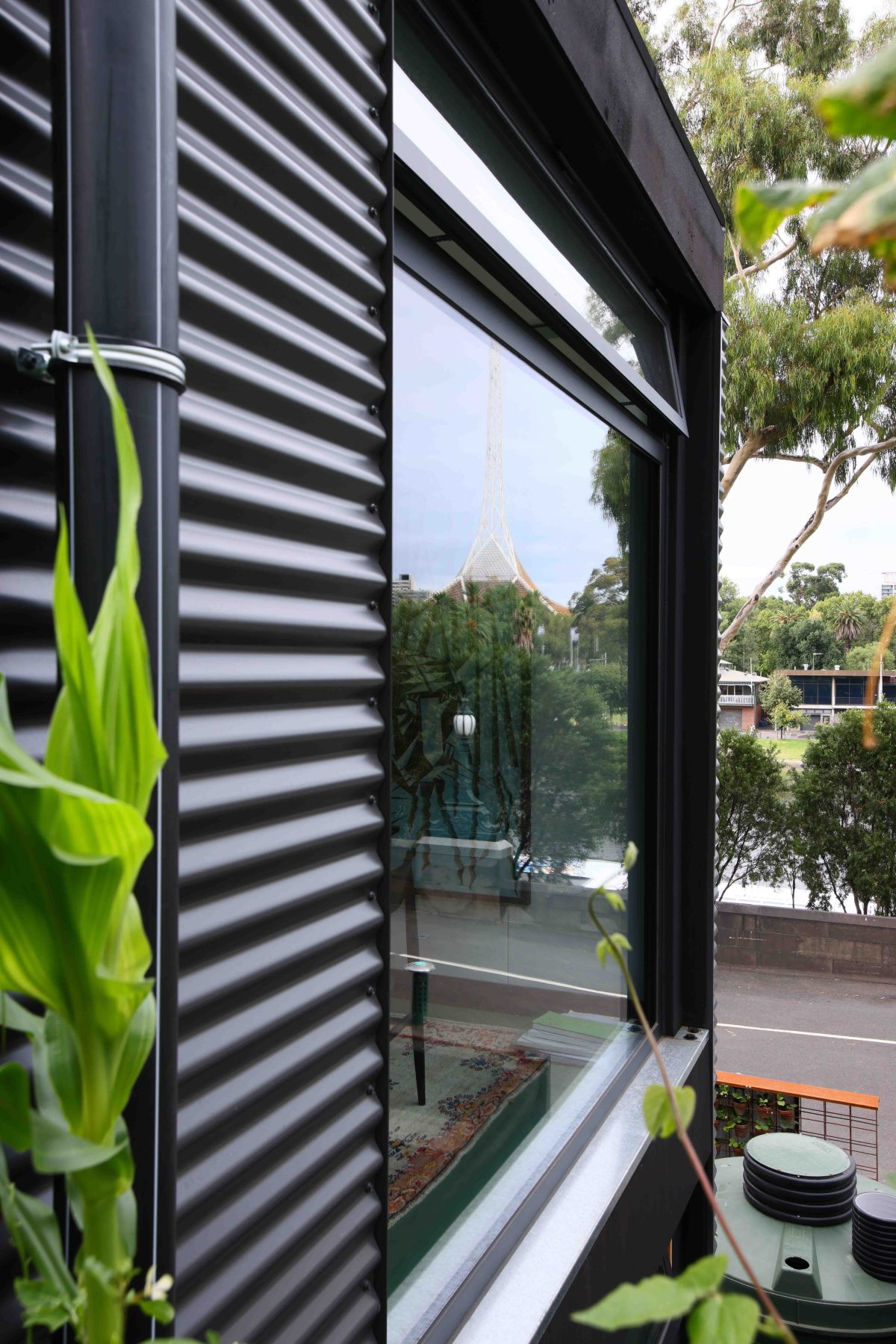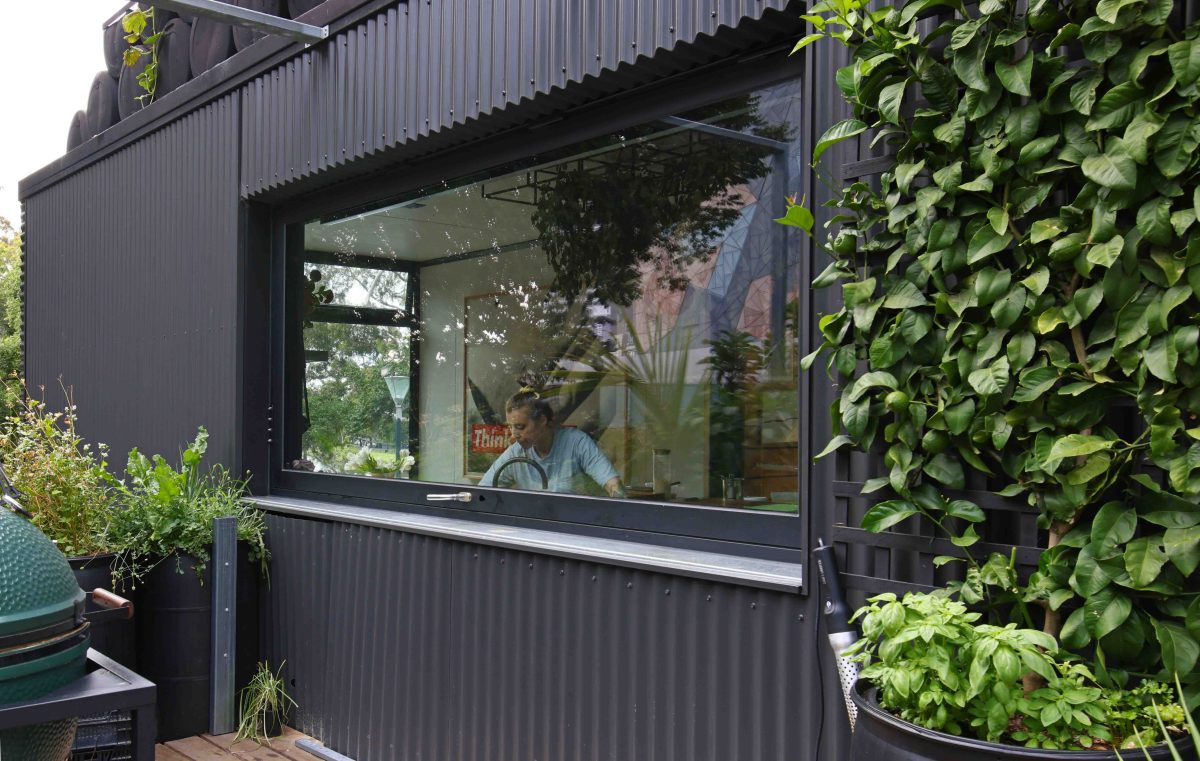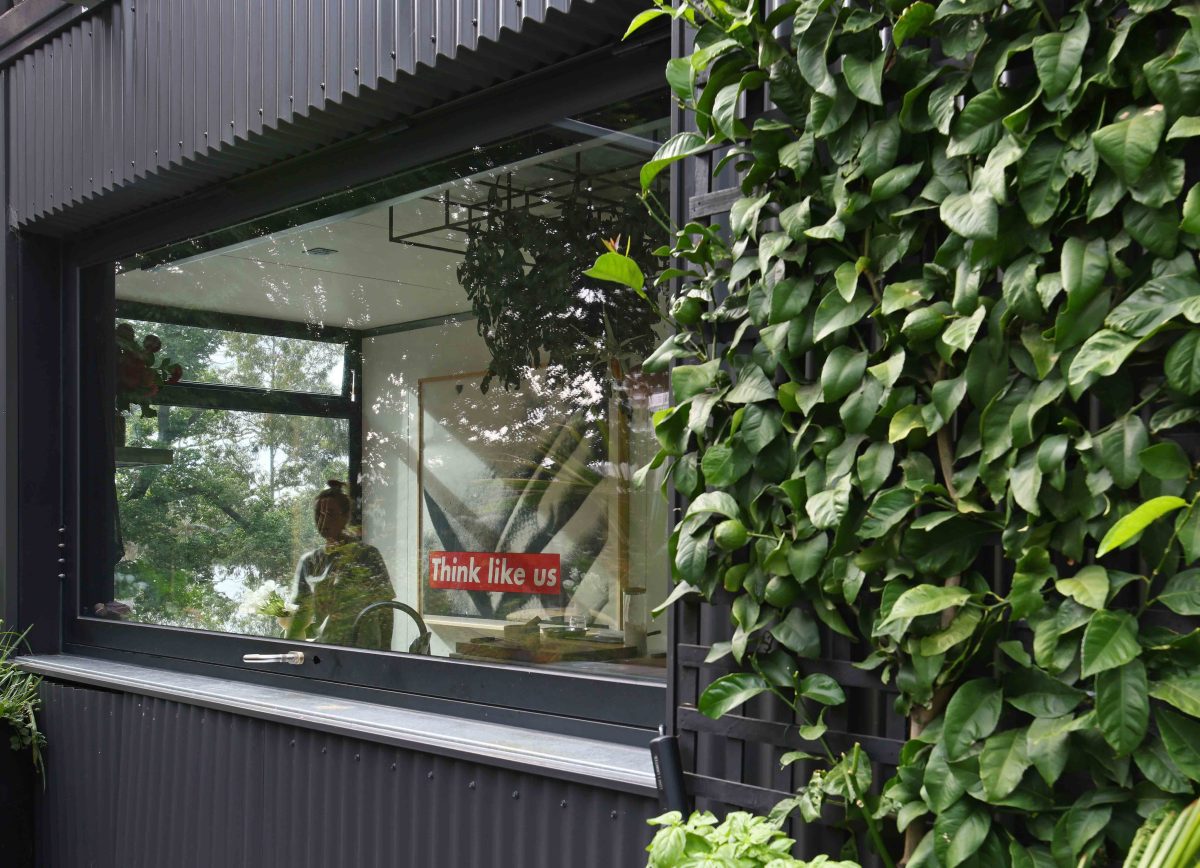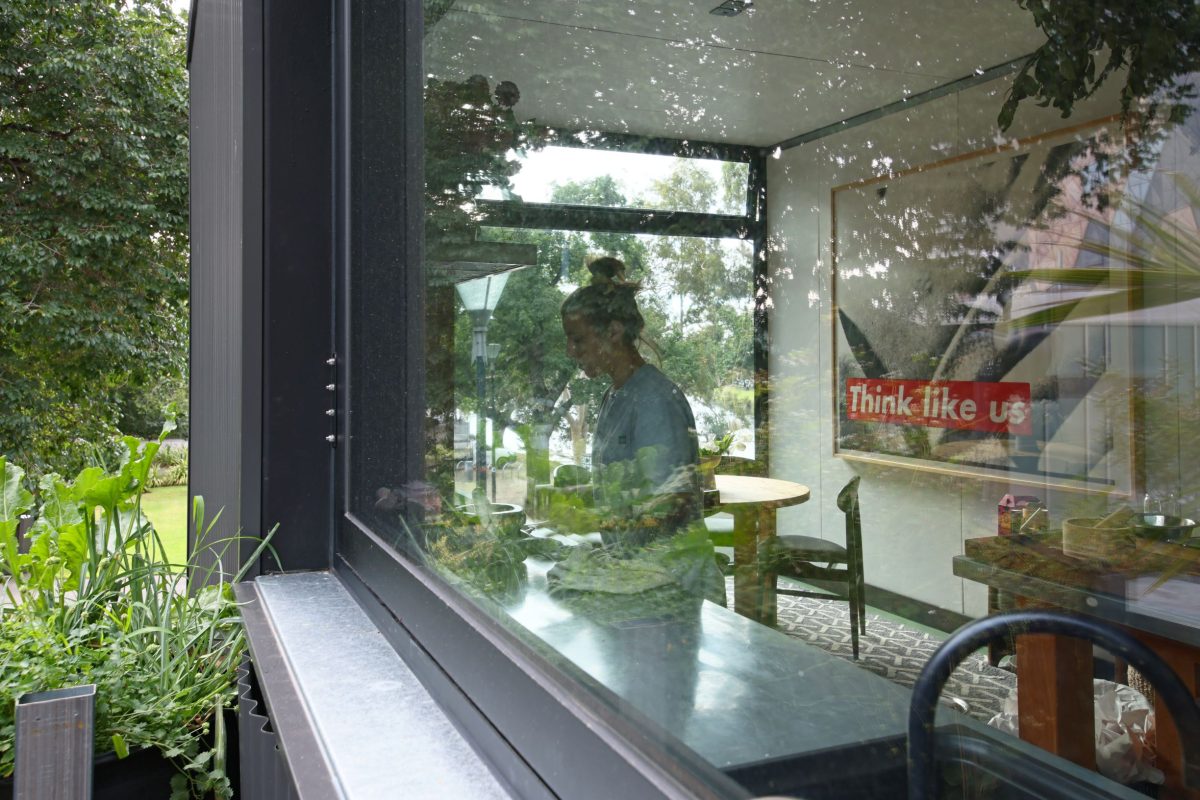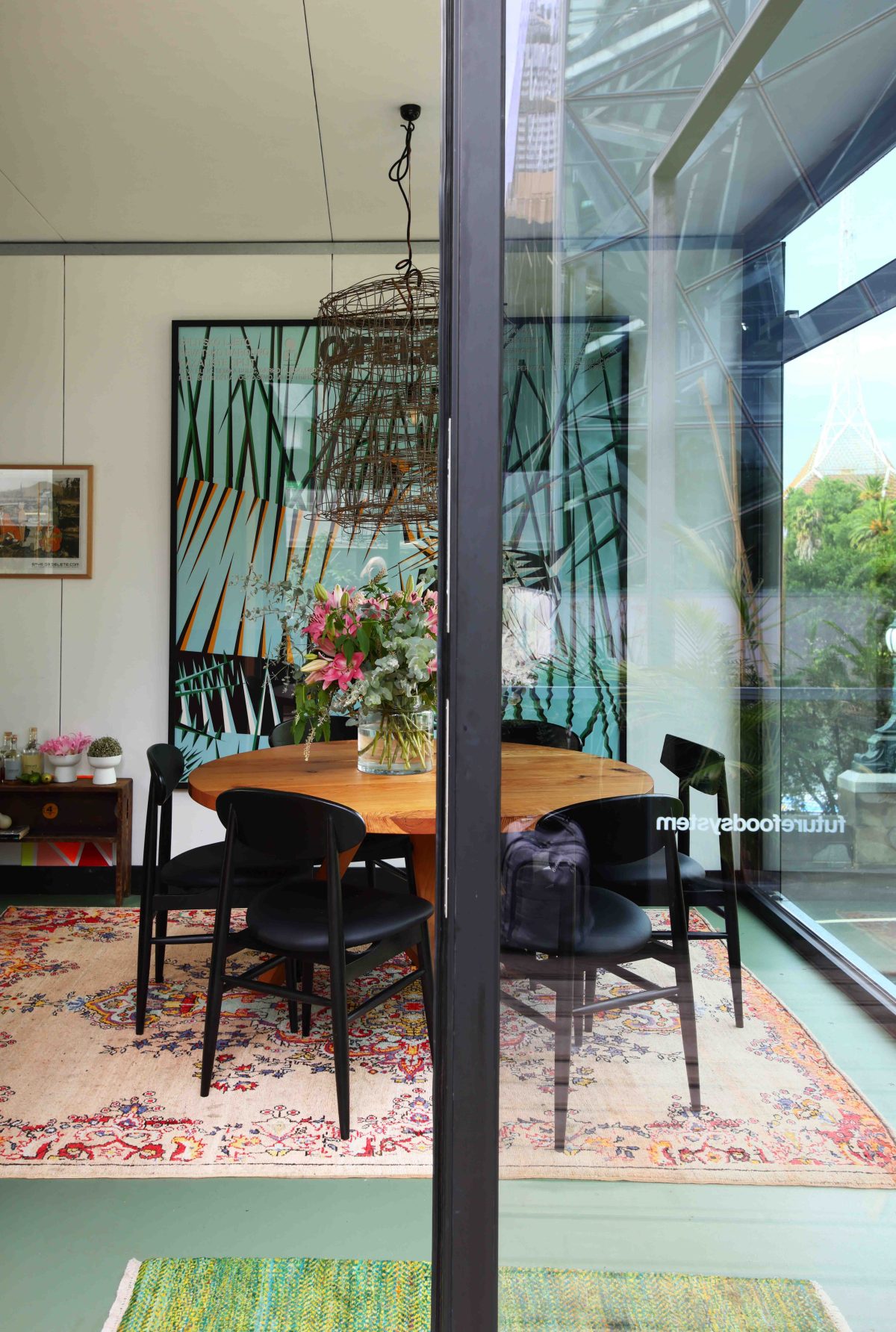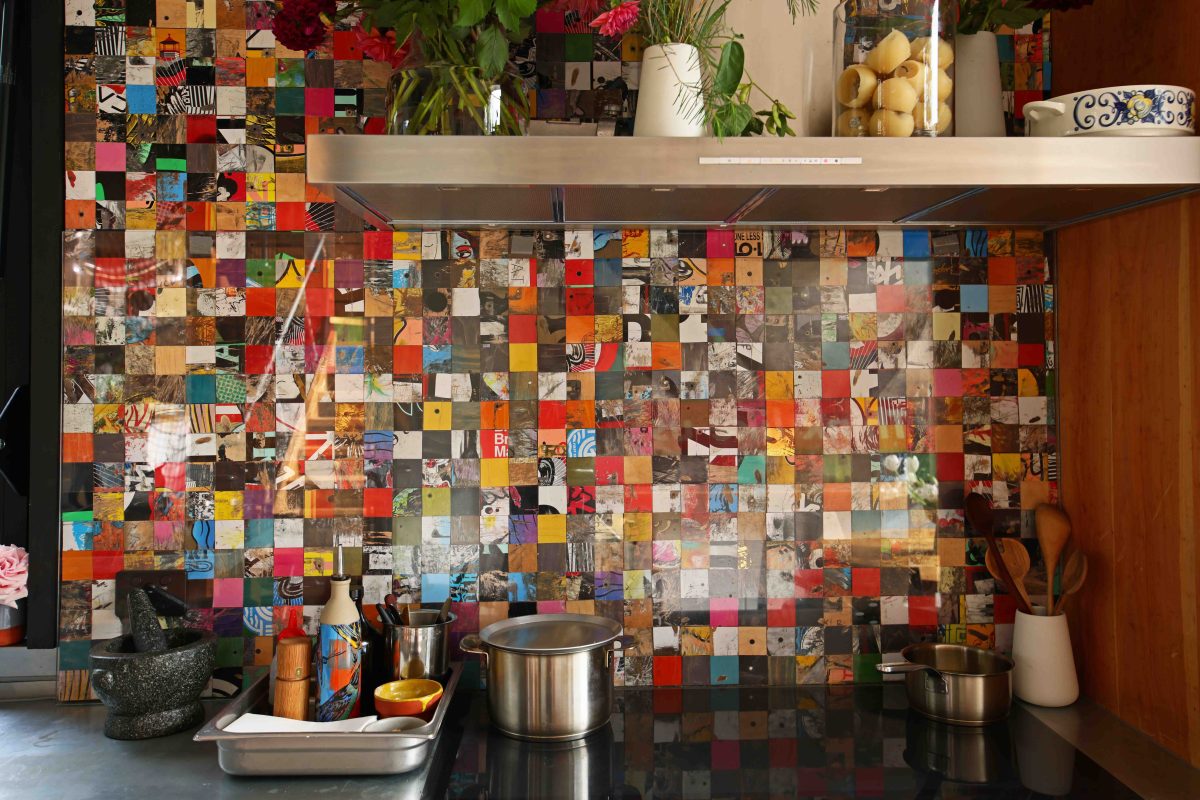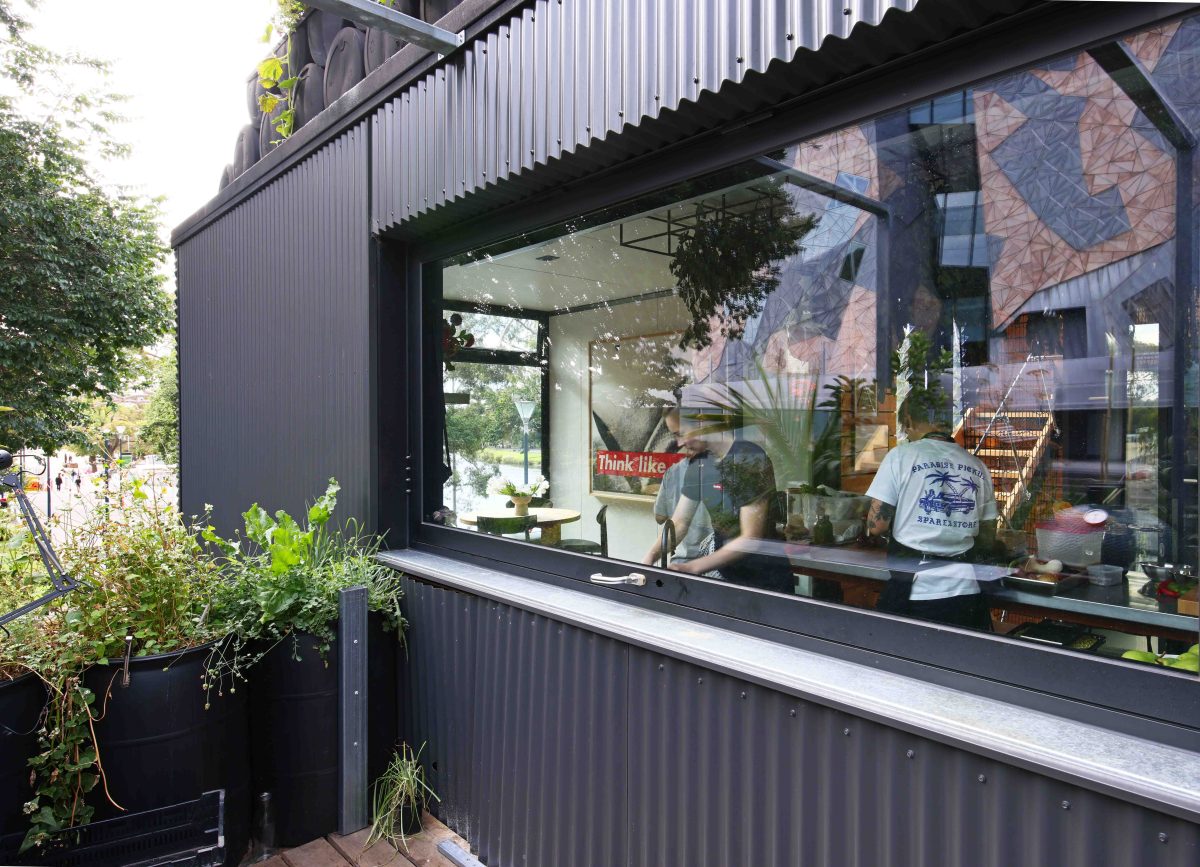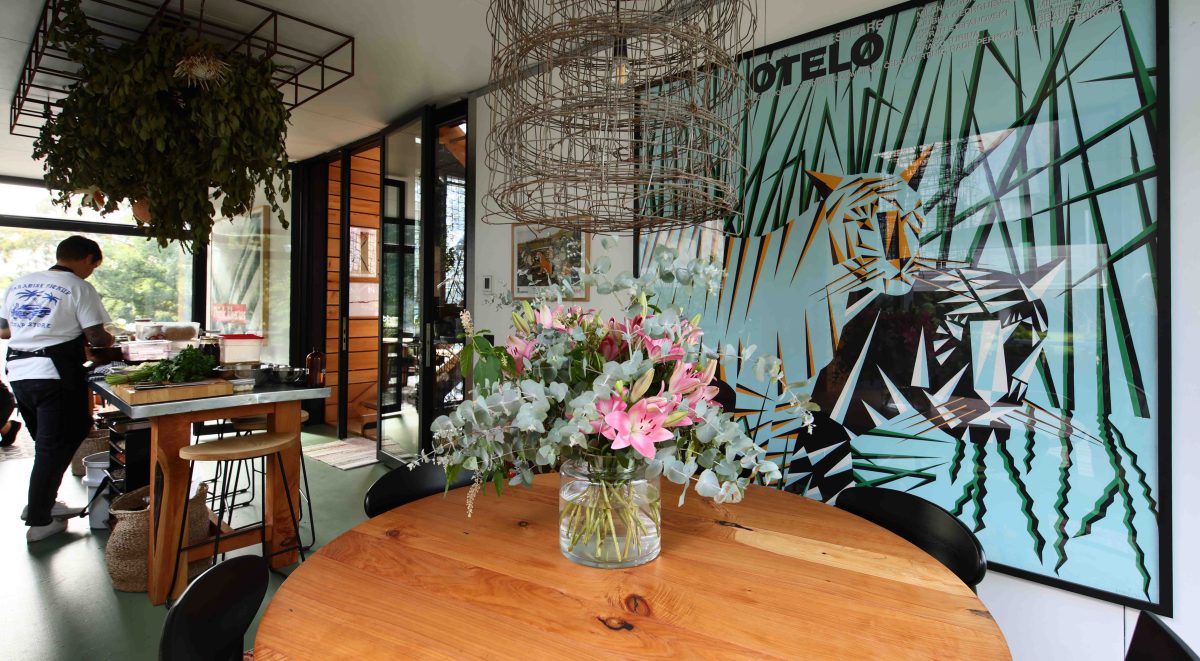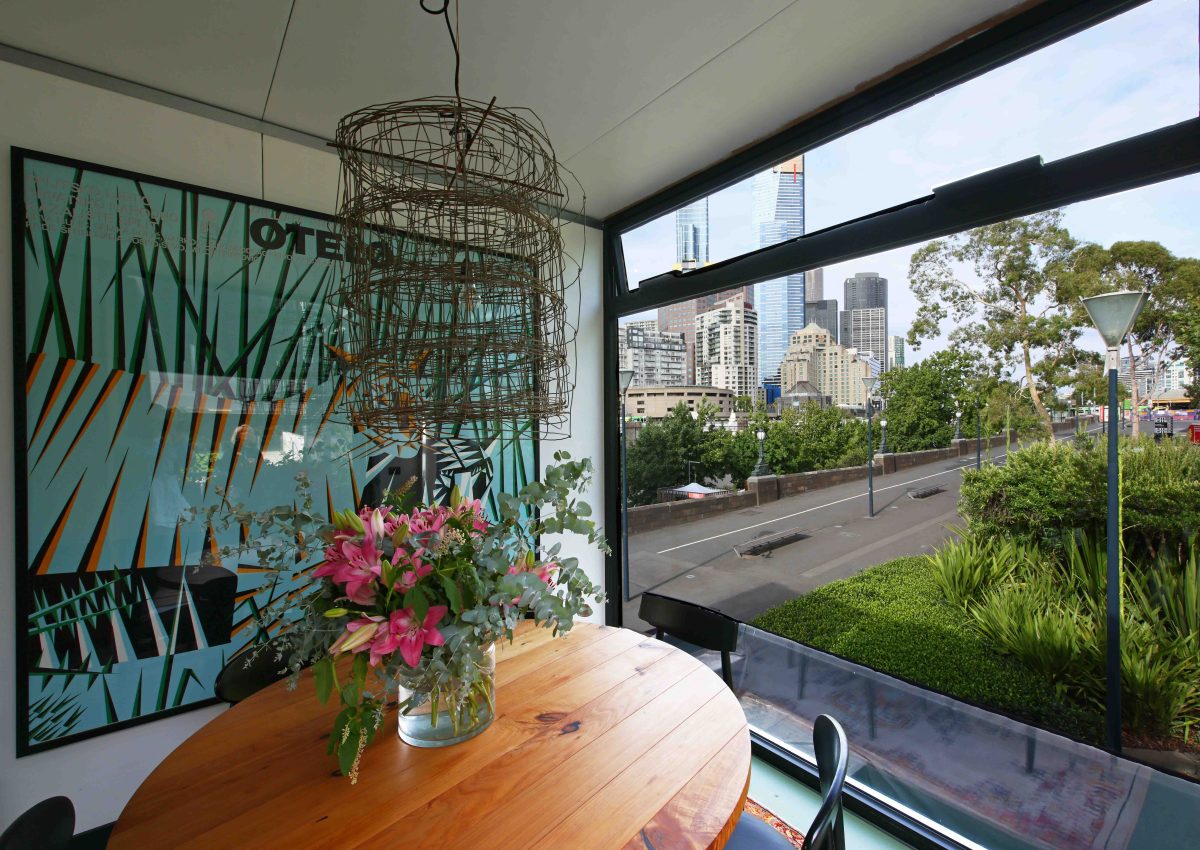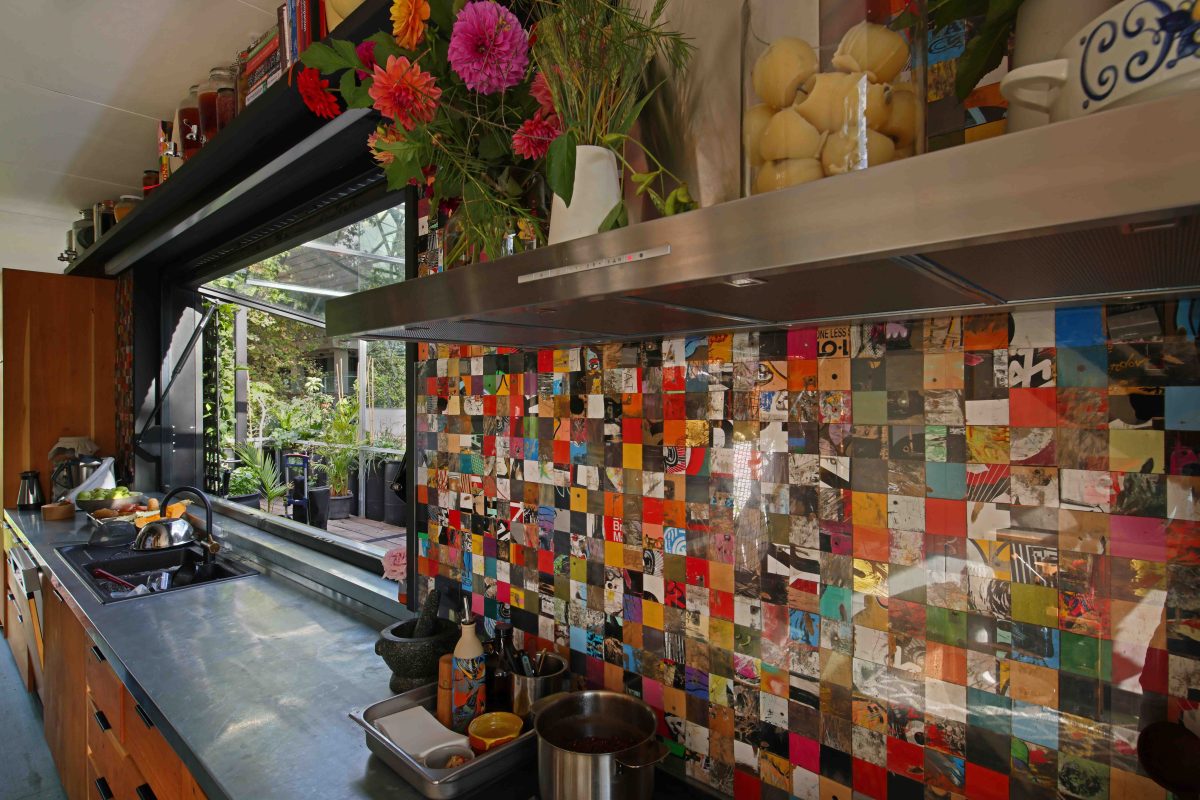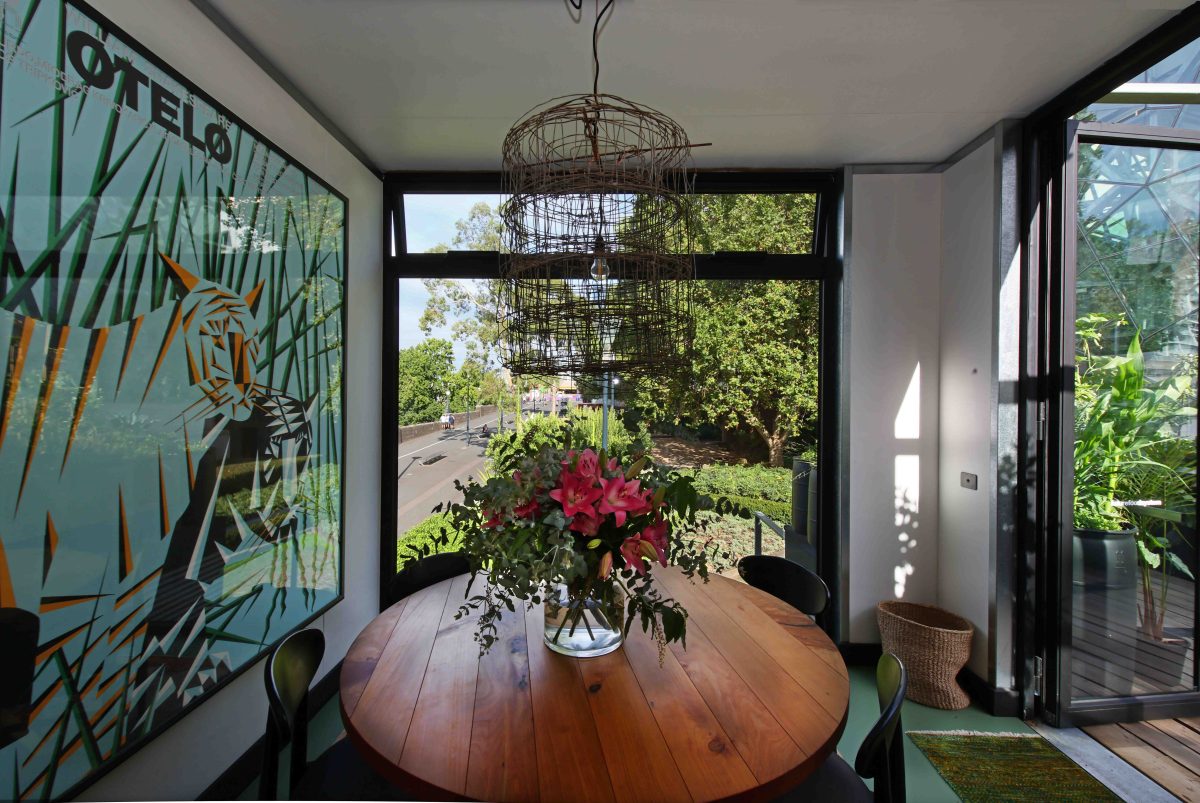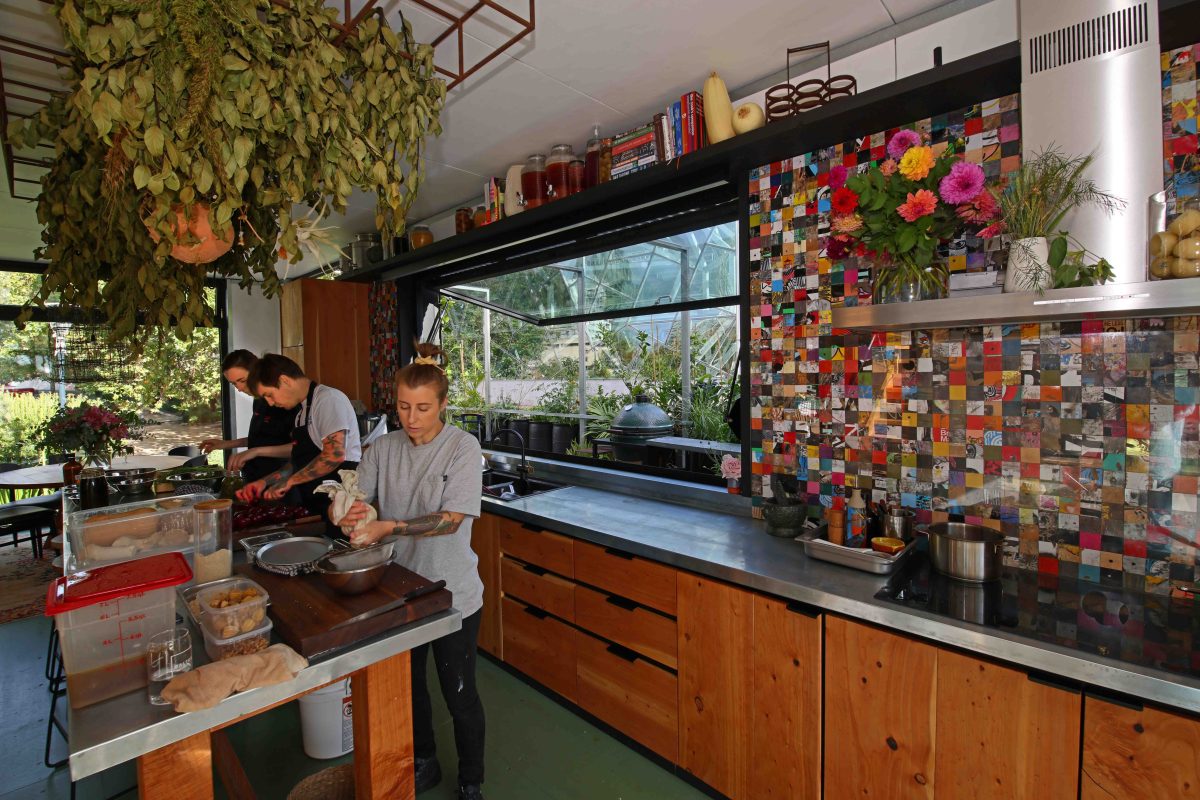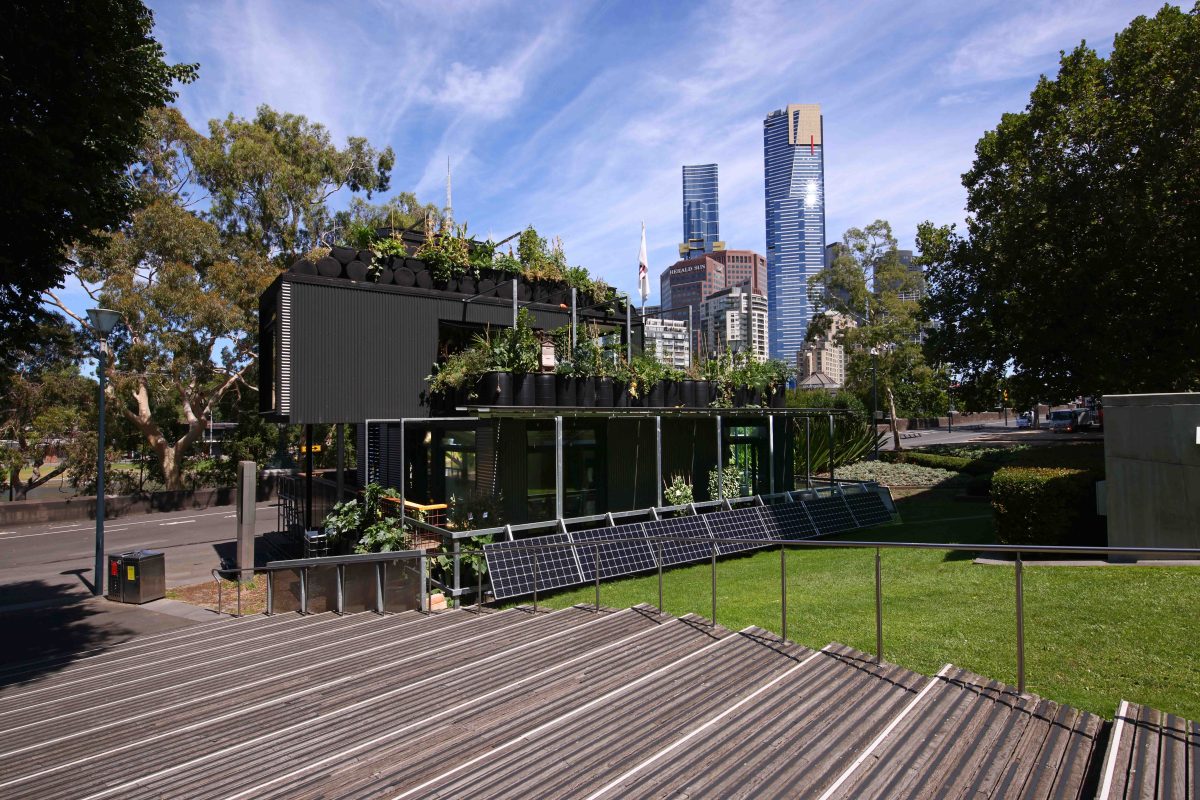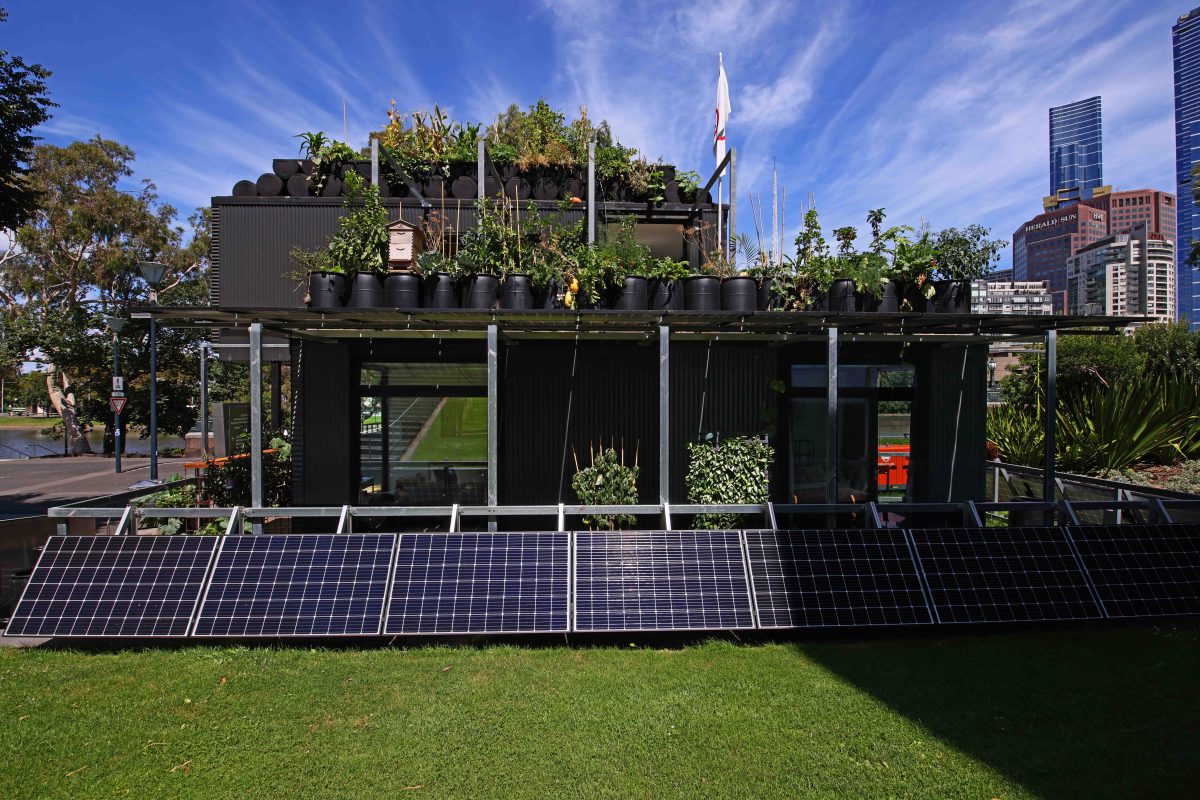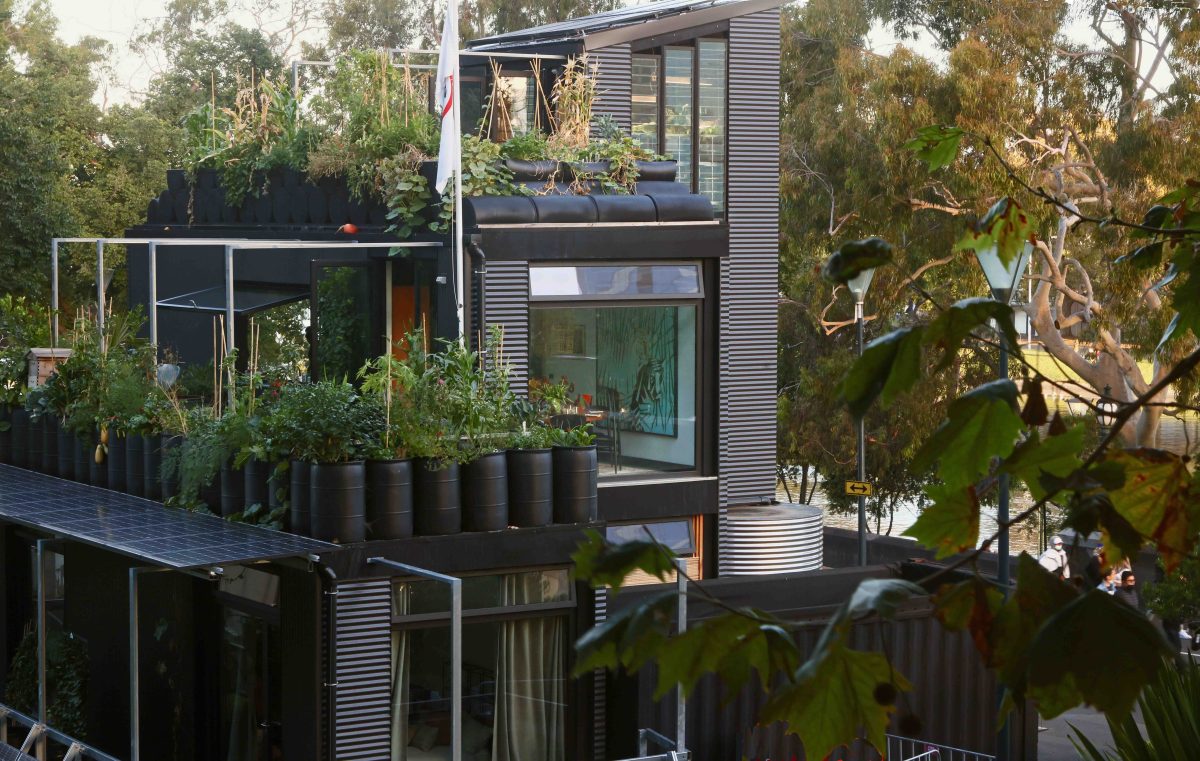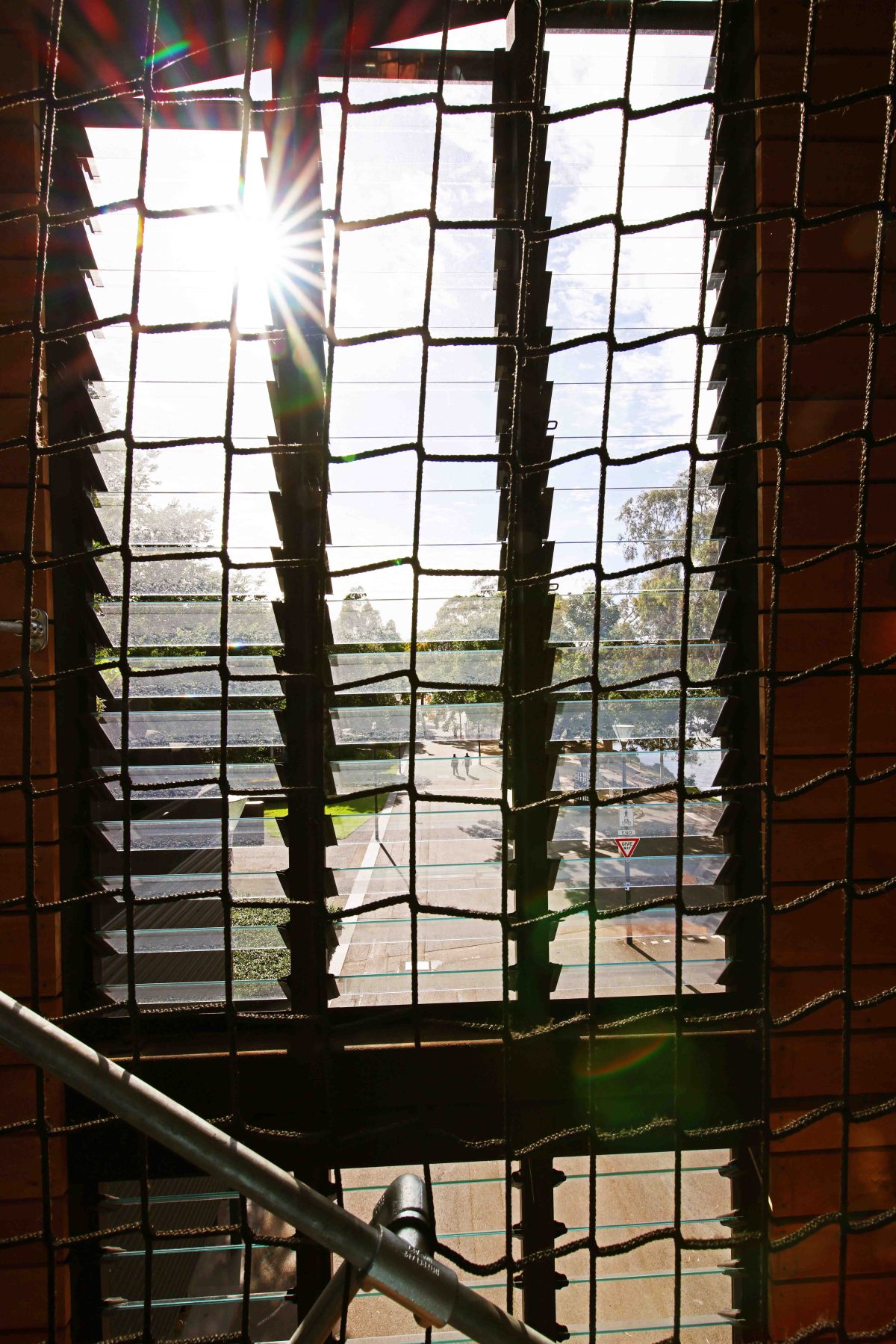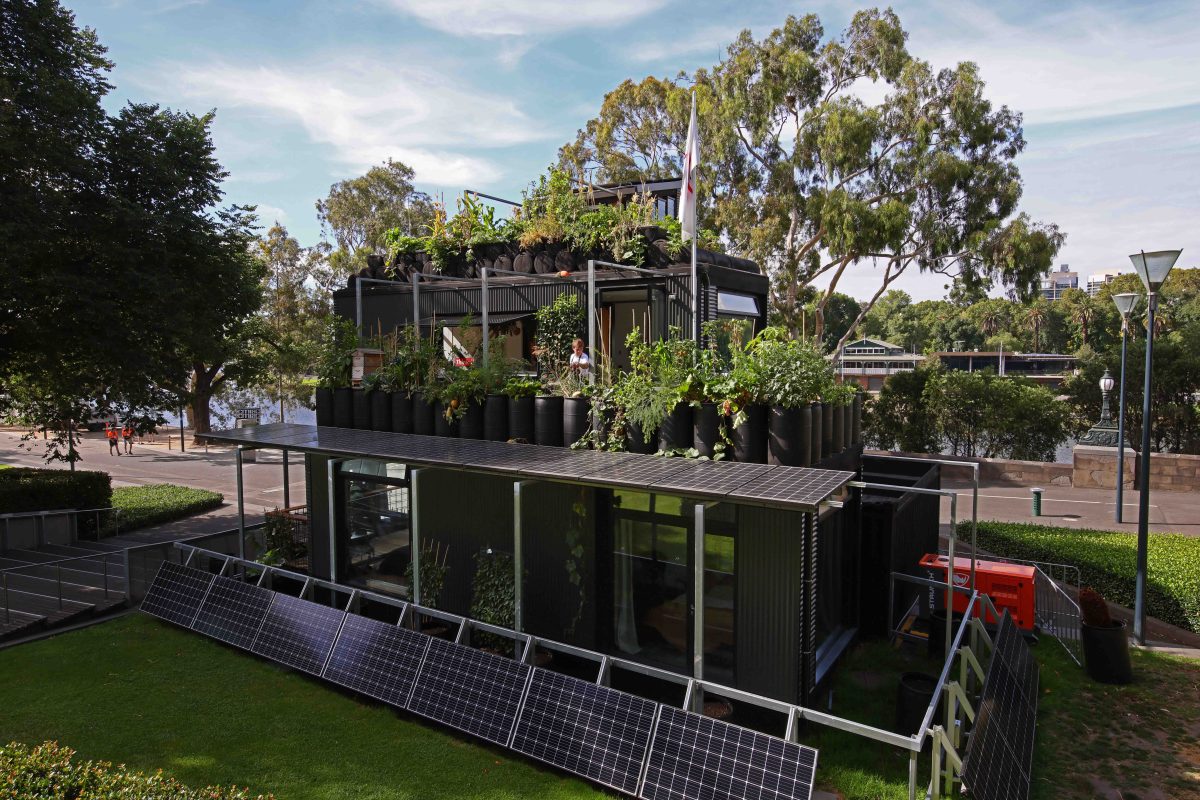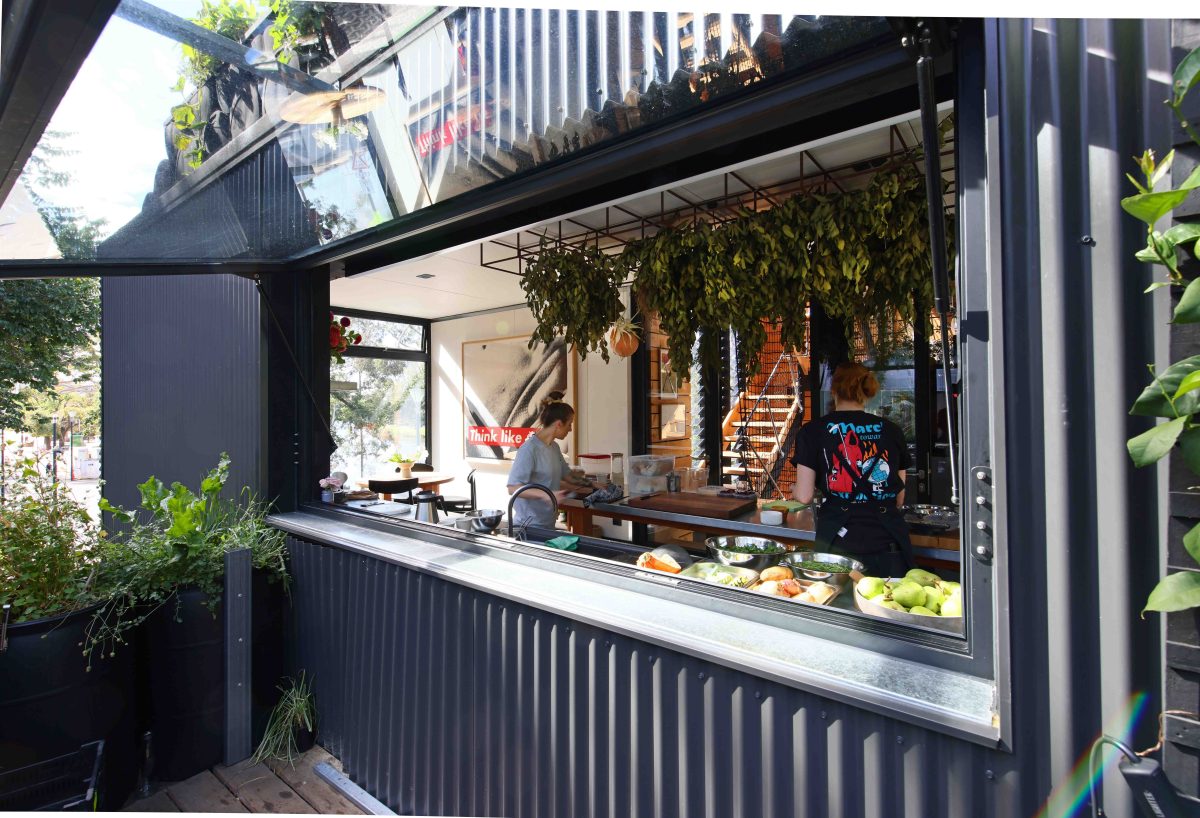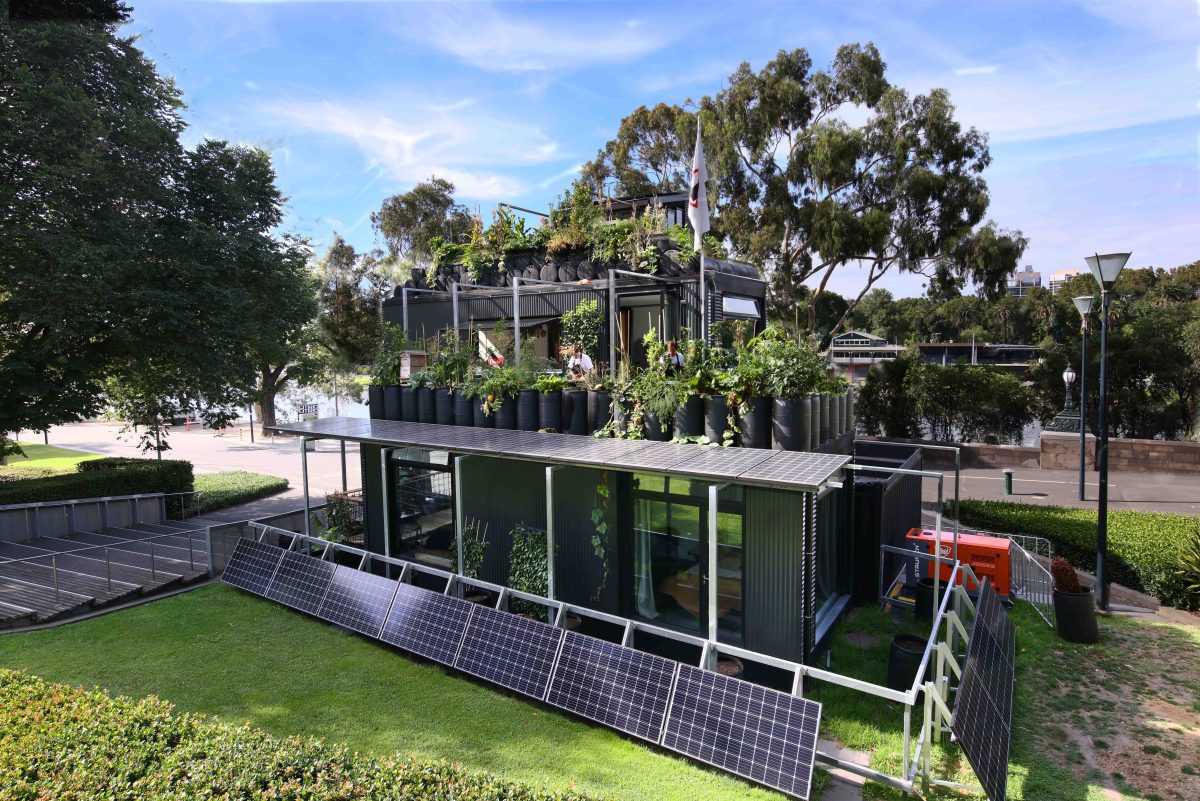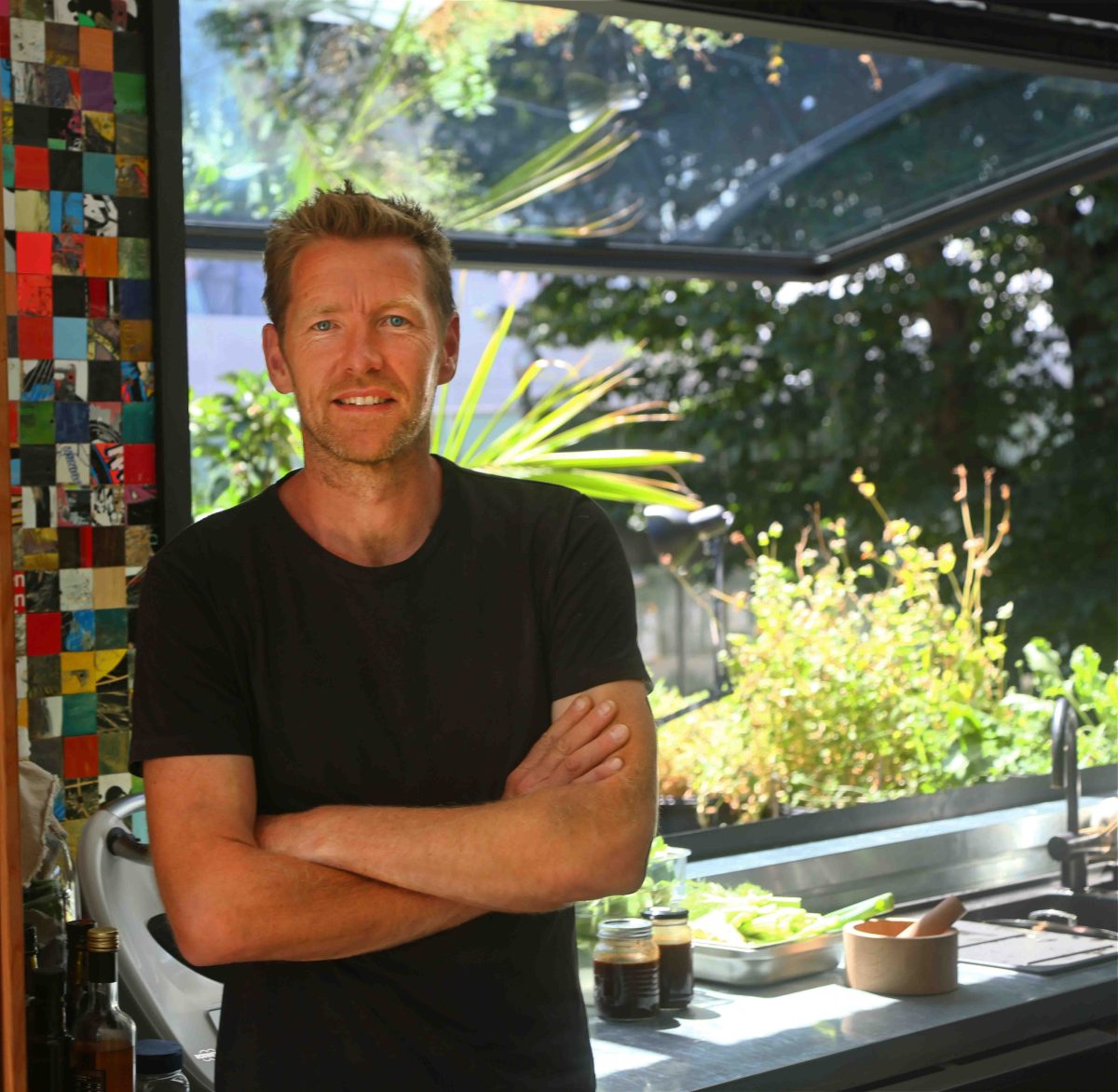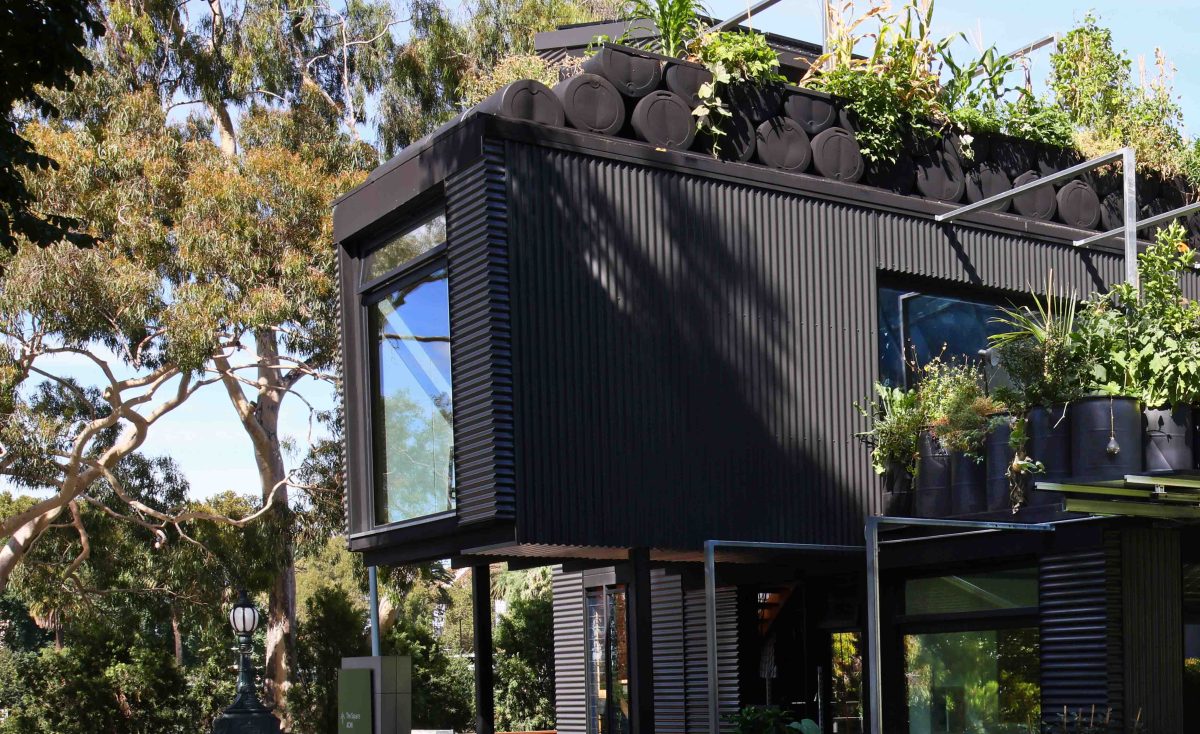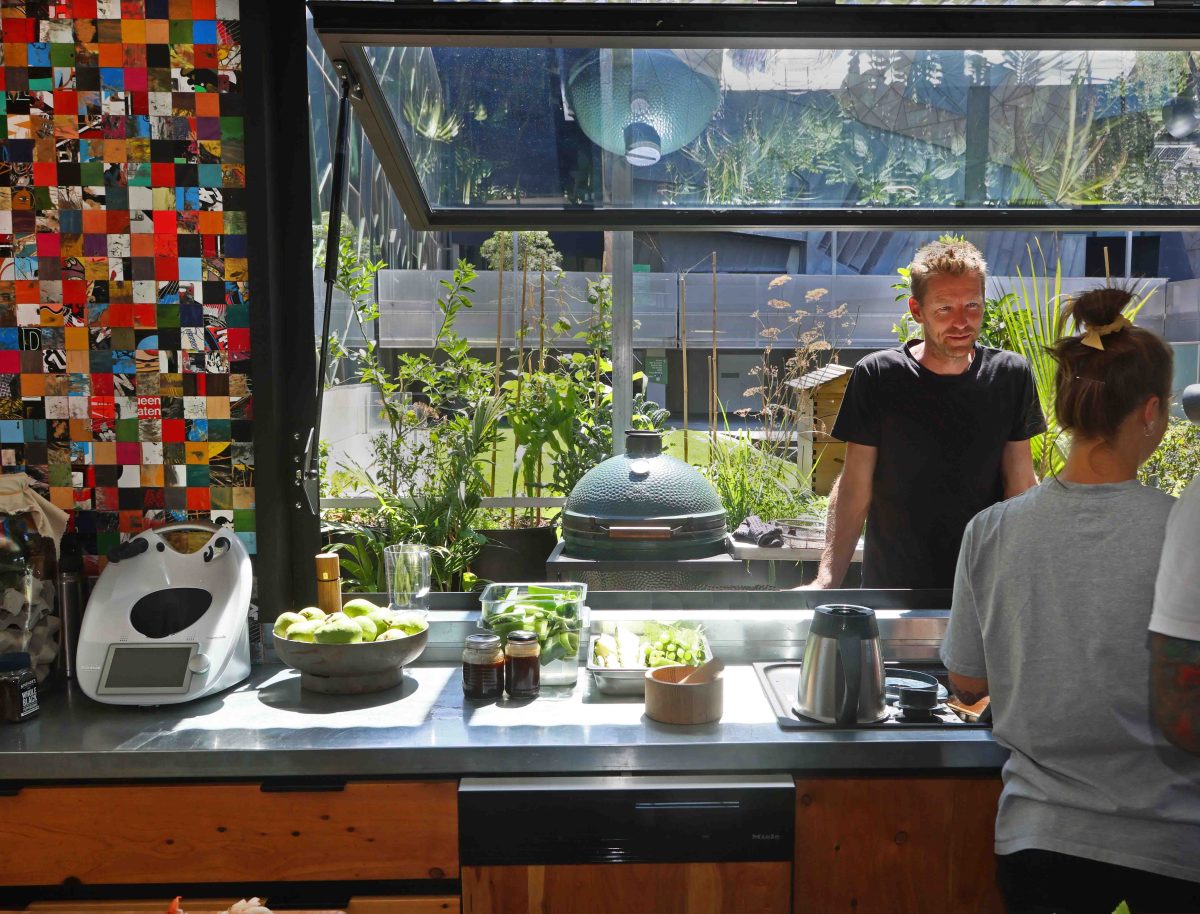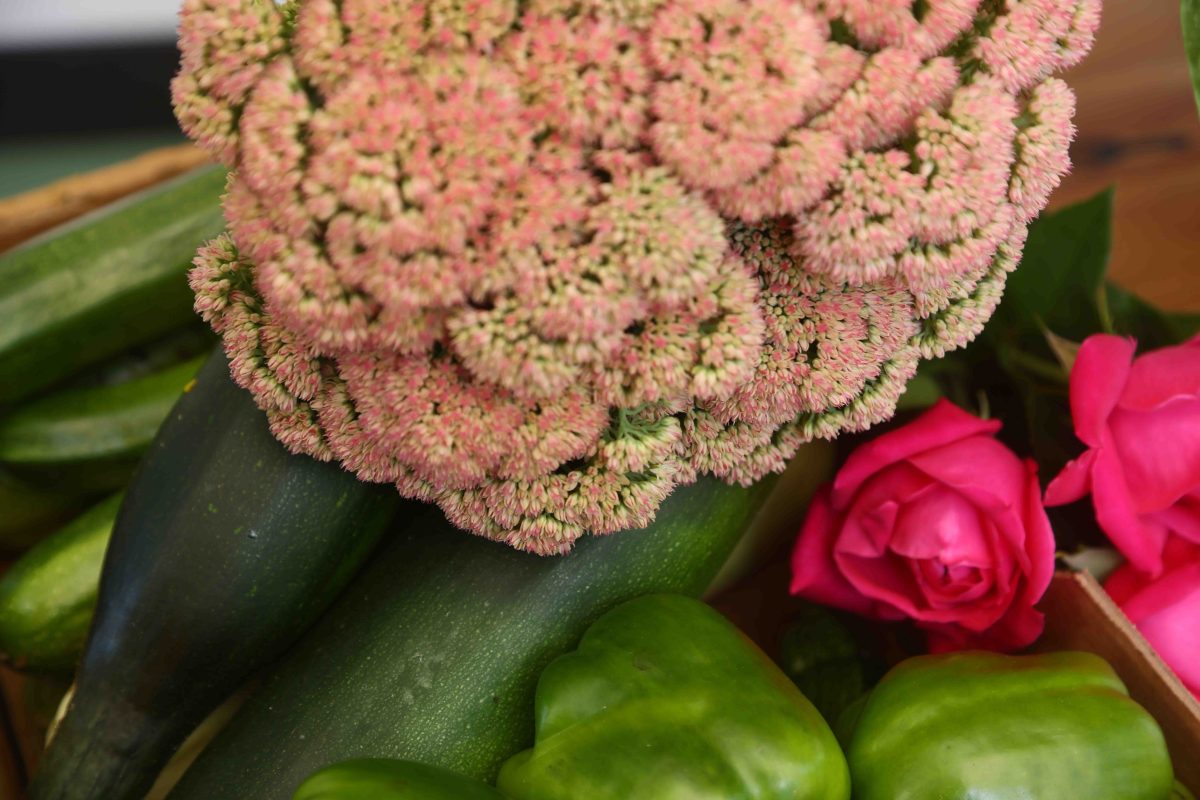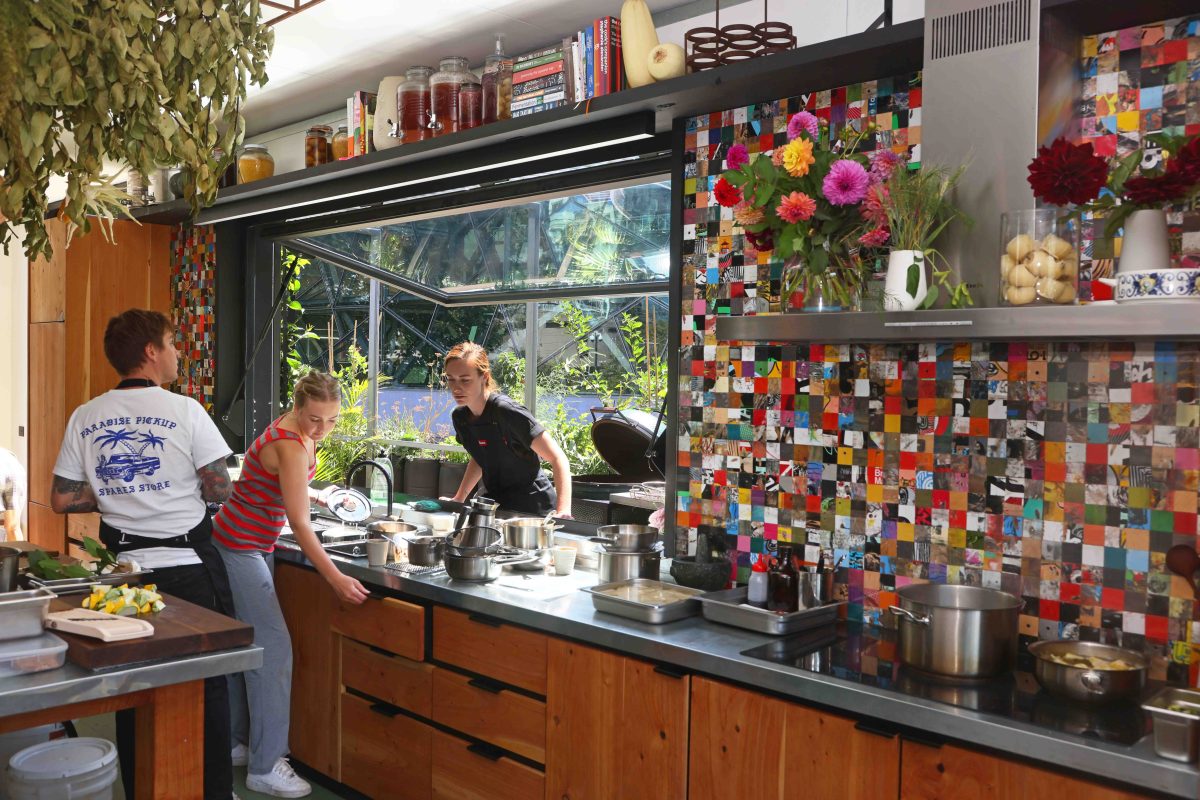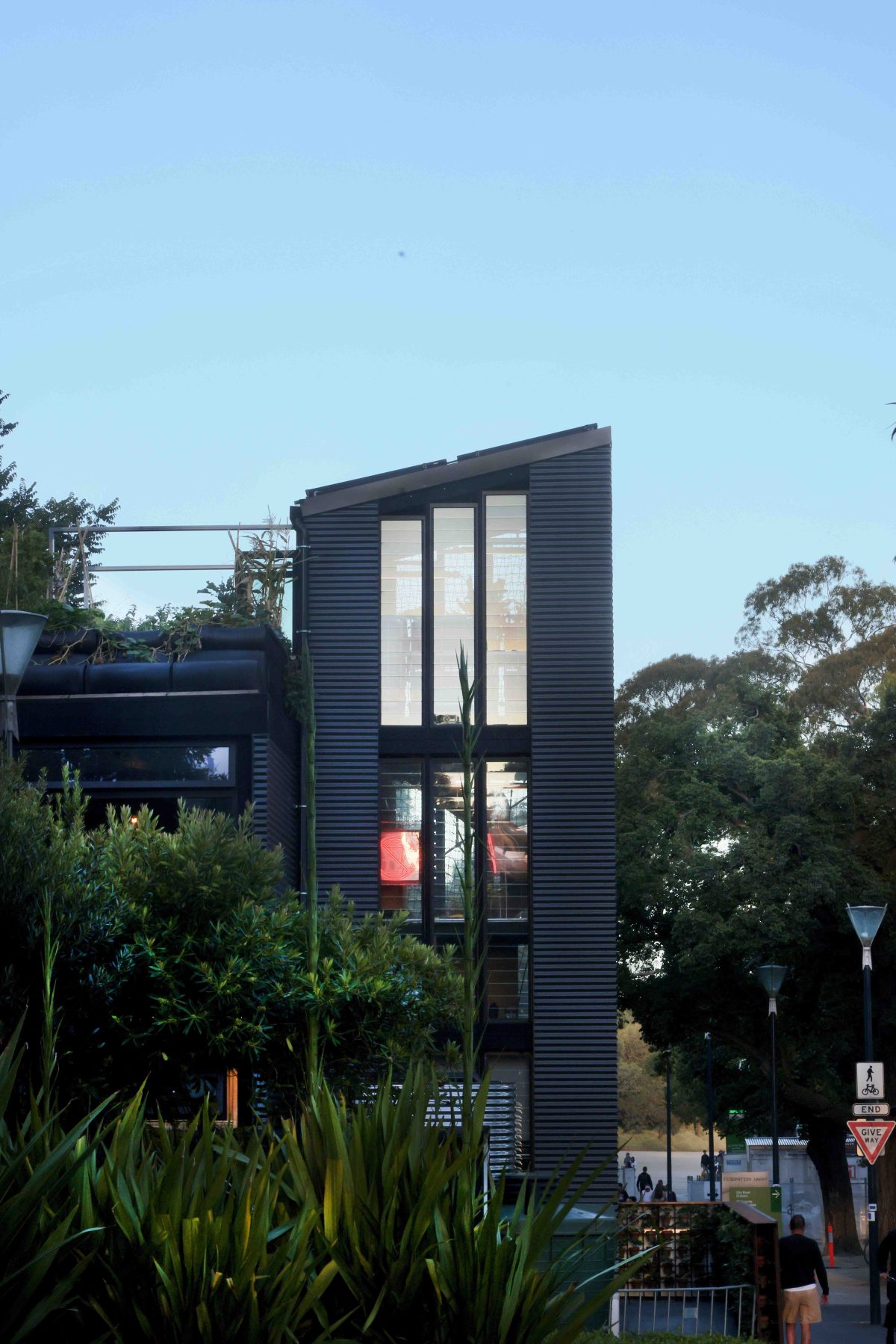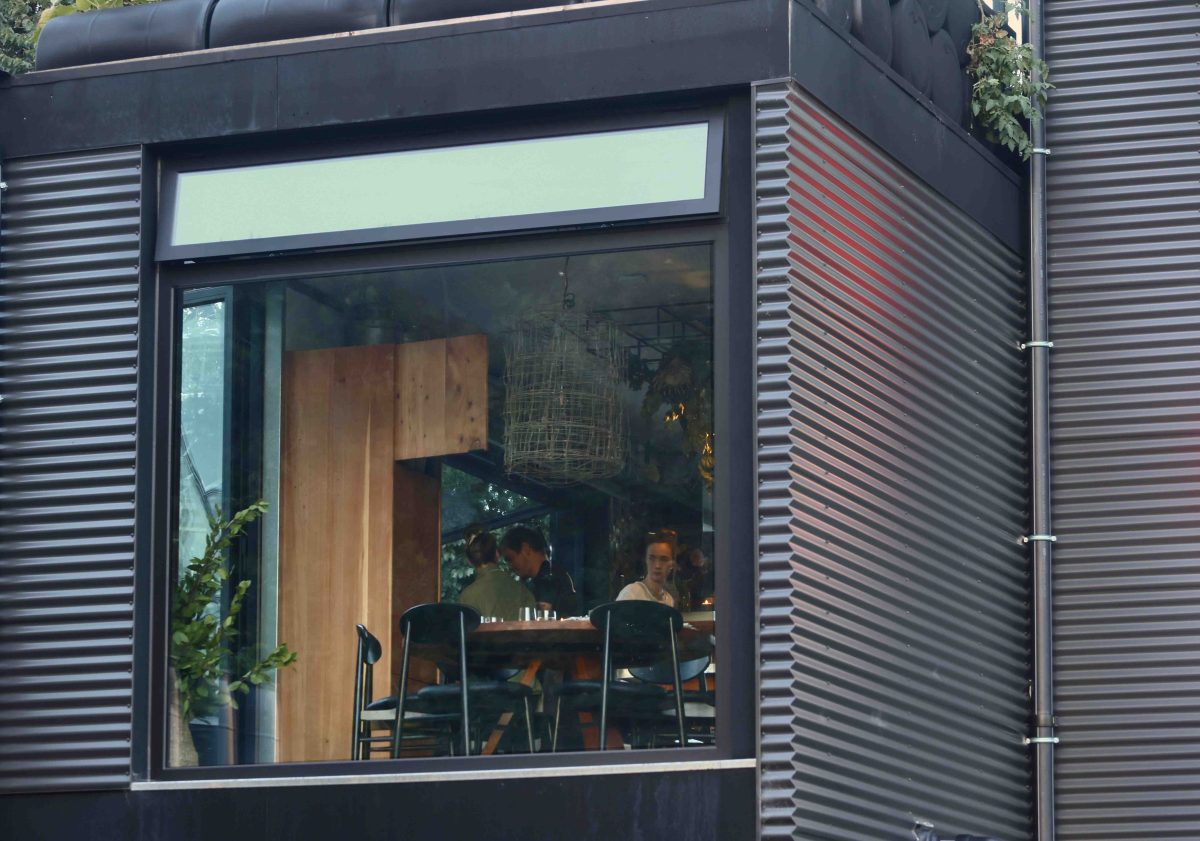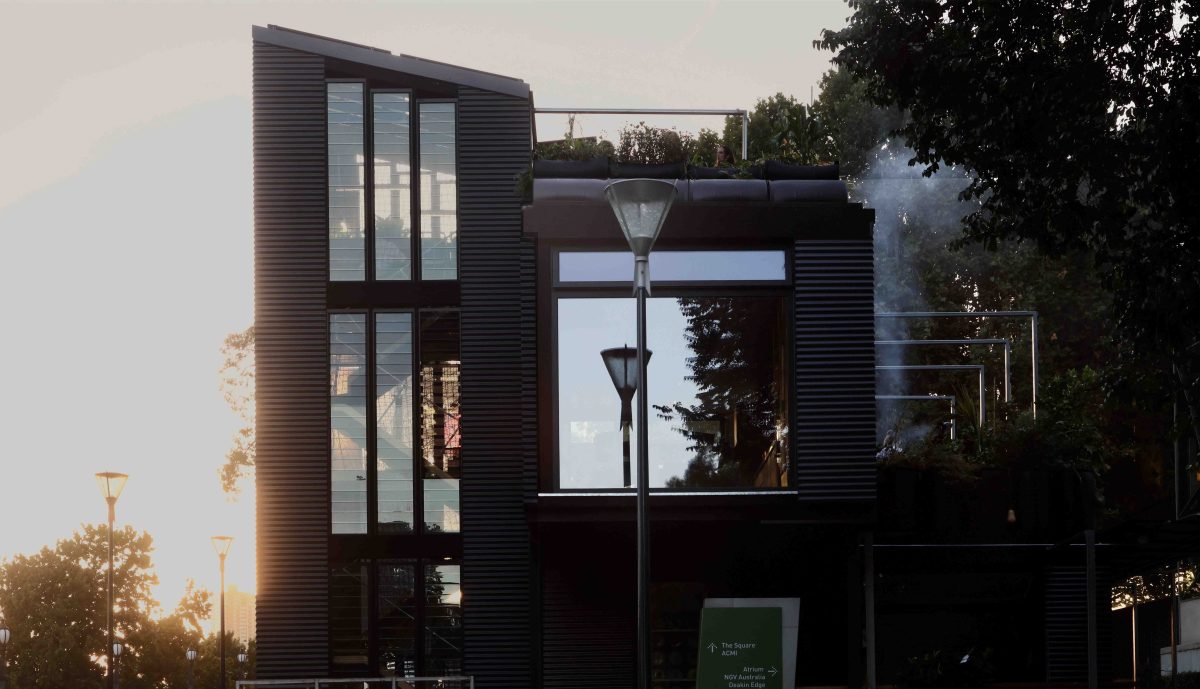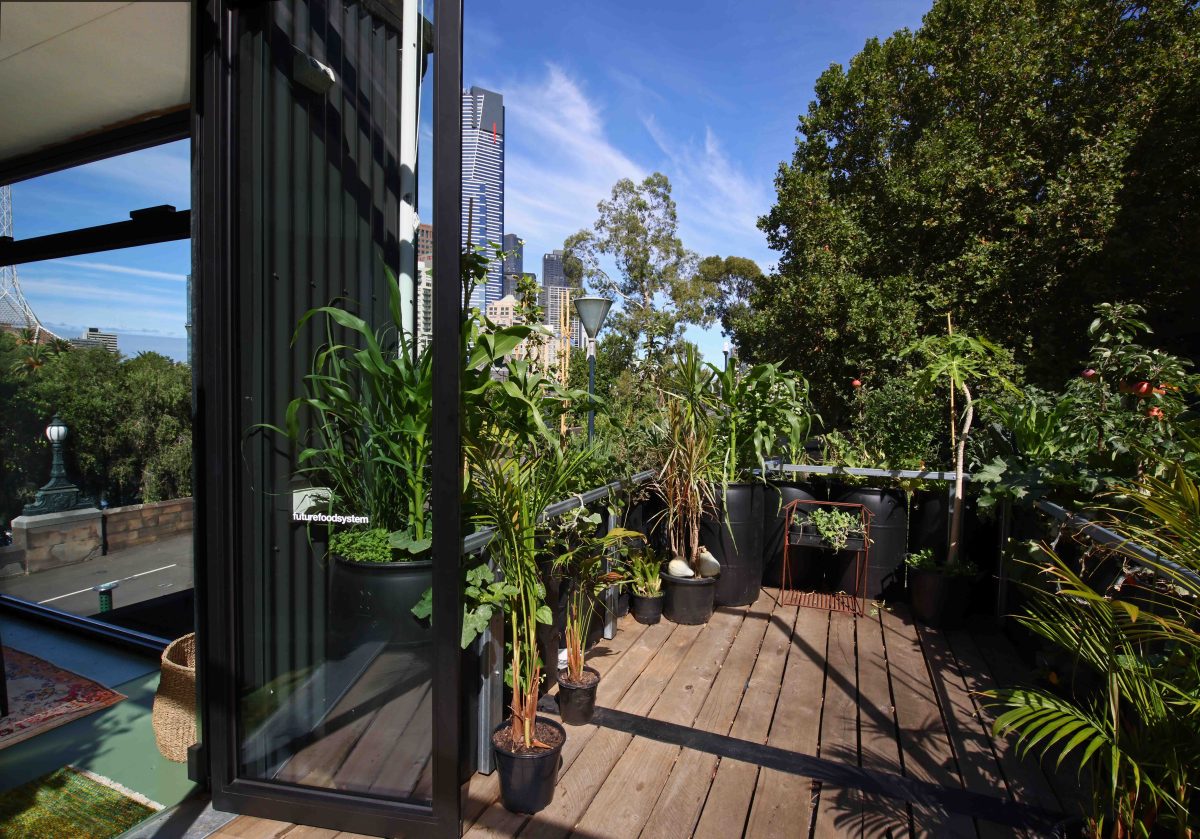Joost Bakker's Future Food System
Federation Square, Victoria
Just as David Attenborough extols the wonders of the natural world, the warrior of zero-waste Joost Bakker, is no less convincing. Bakker’s latest production is a Garden of Eden made possible with new technologies and impressive vision.
This local guru-of-green has a new project in Melbourne’s Federation Square and it’s a compelling example of sustainable housing – and living – right in the city’s heart.
Viridian’s sponsorship of Bakker’s restaurant, Future Food System, sees a remarkable convergence of ideas and technology ensuring no-waste.
High specification Viridian LightBridge next™ double-glazed windows are pivotal to his high-tech treehouse achieving its full potential. Passive orientation and sublime connection to its river setting are among the obvious benefits here for this charcoal toned beauty.
Bringing the best of the bush to the city sees Joost’s maverick philosophies up-end convention with a verdant top down garden. His head-turning work sited between Federation Square and the Yarra River is all elegant productivity.
With seating for 14 restaurant guests, all food for the bespoke venture is sourced in-house. The technology packed tri-level project is destined for outer Melbourne where it will become home for Bakker’s rural based Mum. Viridian’s LightBridge next™ glass is instrumental in the project’s brilliant clarity and amenity.
As a restaurant experience it brings diners face to face with a self-sufficient future. An array of computers, batteries, inverters, collectors and composters are tuned to operate the restaurant/house run by live-in chefs Jo Barrett and Matt Stone.
Aquaponics, renewables, passive design and Viridian’s double-glazed LightBridge next™ windows are key strategies that deliver spectacular comfort, and energy savings.
Bakker’s mission to illuminate, educate and inform the world about sustainable living is ready to deliver. Designed for fully off-the-grid living, it’s stocked with fish, mussels, crabs and verdant garden for its restaurant.
The 87 square metres across three levels with two bedrooms is a combination of new and recycled materials stabilized with 35 tonne of soil, compost and garden.
A champion of change in the way we harvest and source food through to the way we build cities, Bakker wants us to embrace food independence and smarter, low energy housing. He talks to us about how LightBridge next™ fits beautifully into his vision for sustainability. See below for our Q&A with Joost, an amazing video tour and picture gallery.
“It’s really important that sustainable architecture becomes mainstream. We don't really consider materials enough. We need to think longer term.” Joost Bakker
Viridian (V): This is almost ‘anti-design’. It’s a sustainability rather than ‘style’ response.
Joost Bakker (JB): This is completely designed to be practical. Nothing is designed to be purely beautiful. It’s about modules and as a skeleton able to go on one track and hold soil. So it’s designed in reverse. The soil on the vertical roof is integral to its foundation. Without the soil on the roof, we can’t build this building. It’s totally disconnected from the ground, and reliant on that weight of the soil, to hold the building down.
V: This is sustainability that also happens to be seriously good fun. And it’s a building with almost no environmental footprint.
JB: It’s not hard. It’s like they used to say, “You can’t have a zero waste restaurant.” Well, you can’t have it until you actually do it, and you build it, and you show that it can be done. So it’s really important for me that I feel that we’ve used materials that are easy to come by, and are using systems that are well trialed, and grow great food. We’re appealing to people in the right way, and we’re showing it is possible to be sustainable and eat delicious food at the same time.
V: Many people see organic architecture as mud brick, and belonging only in the country. Your work proves it can be incredibly functional, and beautiful to occupy anywhere.
JB: It’s really important that sustainable architecture becomes mainstream. We don’t really consider materials enough. We need to think longer term. The World Bank estimates almost 60% of our emissions are because of the food we eat. It is the most destructive human activity on earth. I just believe it doesn’t need to be so. We generate enough waste where we live, as in we generate water, we have organic material that can easily become food for plants.
V: This is so operable. There’s so much technology packed in here that is largely invisible.
JB: I love the idea that a house can be an ecosystem. So I really dream that one day our houses will have the bio-floor of a rainforest so when you wake up, from the moment you sleep, you breathe in the microflora that you would if you lived in a forest. We now know, through science, that the microbiology and soil generates a microbiome in the air, that is really good for wellbeing and for mood. We use water for a split second and it goes down the drain. What we’re doing here is reusing that water to grow plants, and kind of harnessing the energy, using windows to get to feel like you’re outside. A lot of people say that when they’re here, they feel like they’re inside, but you feel like you’re outside because you’ve got these beautiful elm trees that surround you. So you feel like you’re in an indoor-outdoor space, and that’s intentional.
V: Eco-projects are often thought of as low-tech. whereas here it’s so smart-tech, including the almost invisible Viridian LightBridge next™ double-glazing that does so much heavy lifting. A lot of that clever science is integrated throughout.
JB: People comment on how quiet the house is. That combination of a soft coating on the glass means it’s almost 30% quieter than the next best glass. Everything is designed for a purpose. These windows allow full light, are cool and then there’s the natural cross-flow ventilation.
V: It’s not always well understood that glass comes in a wide variety of performance levels.
JB: Glass has this ability to take out the variation in weather, and yet you feel like you’re completely outside. From a sustainability point of view, it’s one of the best materials on earth and it can be completely recycled as well. So it’s undervalued, underappreciated and in a space like this glass is one of the most important elements. It connects outside to inside, offers storm and wind protection and takes out the temperature highs and lows.
V What about acoustic performance?
JB: In a place like Federation Square with all the doors closed it’s hard to believe you’re actually here, because it’s so quiet. The soft coating and the acoustic layer allows it to be much quieter than standard glass I’ve used in the past. Since my houses are about deliberately created views with different light sources, the light quality at around the time we’re serving food is epic. Some people ask: “Why put such a large window on the west?” But the light that streams through this place at night is just amazing. When preparing food, especially in winter, there’s nothing better than having that food covered in sunlight.
V: Your garden is so integral to the whole existence of this restaurant/house. It’s virtually a life support system.
JB: My number one rule is to stop using materials that can’t be recycled. If they can’t be recycled, or can’t be biodegraded and turned into a soil or compost, which ultimately becomes soil, then I’m not interested. Well, that rules out about 95% of materials that are used today. It’s a very strict criteria I use for all designs. That circular economy is the only game in town. Going forward we need to start to adopt zero waste, circular initiatives and glass is a great product that can be recycled. That’s why I love using it as well.
For tours, dining and more information about the Future Food System visit the website here.
See the gallery below, and watch our video tour and interview with Joost!
